www.f1scalemodels.com
... specialising in 1:43 scale model cars (Formula 1, Indy 500, Le Mans, GT and classic road cars)
Archived Updates - 2018
New Additions: December 2018
Thank you to everyone who visited my room during last month's Diecast Model Expo; room trading is really a fun part of the Expo where you can walk into any open room to view what's on sale and have a chat. I've posted a few photos of the expo in case you weren't able make it in person. Also, a big thank you to Dimitri and his team for putting on another great Expo.
Above: Room Trading (F1scalemodels)
Above: Local model manufacturers display their upcoming models in the Expo Room.
Above: More V8 models on display in the Expo room and Dick Johnson signing models.
OK, back to this month's new additions. A bit of a mixed bag this month ranging from classic '70's F1, '50's Jaguar touring cars, '70's Datsun SCCA cars and '80's Japanese road cars. So, what are the highlights this month? The Porsche Carrera Cup is a one-make racing series that is contested all around the world. These national and regional championships, in which drivers compete in identical Porsche 911 Carreras are held in such regions as France, Germany, Great Britian, Asia, Italy, Brazil and Australia. The Australian Carrera Cup was started in 2003 and has been a leading support category for the Supercars Championship. Spark have been producing models of the winners of some of these championship including the past two winners of the Australian Carrera Cup. The 2016 winning car of Matt Campbell was released last year and the 2017 car of David Wall (limited edtion of 300) is now available.
Spark: Porsche Carrera Cup Australian Winner 2017
In 1992 there were 16 teams competing in the F1 championship, vying for a place on the 26 car grid. One of the teams that struggled to qualify at every race was the Andrea Moda Formula Team. The team was founded by Italian shoe designer Andrea Sassetti, who named his team after his company. The team wasn't an entirely new team as Sassetti had purchased the Coloni F1 team after the 1991 season and a deal was struck with Simtek to produce a new chassis to be named Andrea Moda S921. The car was to be powered by a Judd V10. The two main drivers were Roberto Moreno and Perry McCarthy (the Stig of "Top Gear"). The Andrea Moda proved to be a difficult car to qualify; McCarthy failing to qualify in six attempts while Moreno made nine attempts to qualify and succeeded once at Monaco taking the last grid position. During the race, Moreno was one of 14 drivers who failed to finish. The Andrea Moda team was suspended from racing by the FIA with 4 races left in the season on the grounds that it's performance was basically not to the standard expected.
Spark: Andrea Moda S921 R.Moreno 1992 Monaco
The Mitsubishi Starion was a 2-door, turbocharged rear-wheeled drive hatchback sports car manufactured from 1982-1989. When it was first released, the name of the car was the subject of much denigratory speculation, that the Japanese struggled with the pronounciation of word " stallion". However, the official marketing material stated the name was a contraction of "Star of Arion", Arion being Hercules' horse in Greek mythology. The Starion was one of the first modern Japanese turbocharged performance cars with electronic fuel injection and was a prominent competitor in motorsports. In 1987, the Starion won the Australian Production Car Championship and finished 5th in the Bathurst 1000 the same year.
Kyosho: Mitsubishi Starion 2600 GSR-VR
OK, that's it for another month and another year!! The final event for 2018 will be the regular Friday night model car fair at Granville on 14th December; I hope to see you there. Finally, I'd like to wish everyone a safe and happy festive season. Happy collecting.
Formula One
- 1992 Andrea Moda Judd S921, R.Moreno (34) Monaco GP (Spark)
- 1988 Larrousse Lola Ford LC88, Y.Dalmas (29) Monaco GP (Spark)
- 1972 March Ford 721, N.Lauda (15) Argentinian GP (Spark)
- 1973 March Ford 731, D.Purley (29) Italian GP (Spark)
- 1975 Shadow Matra DN7, J.P. Jarier (17) Austrian Grand Prix (Spark)
- 2018 Toro Rosso Honda STR13, B.Hartley (28) 10th Azerbaijan GP (Spark)
- 1985 Zakspeed 841, J.Palmer (30) 11th Monaco GP (Spark)
American Racing
- 1971 Alfa Romeo Tipo 33/3, Galli/Stommelen (33) 2nd Sebring 12hr (TSM)
- 1964 Corvette Grand Sport, Hall/Penske/Sharp (67) 3rd Road America 500 (TSM)
- 1953 Cunningham C4-R, Fitch/Walters (57) 1st Sebring 12 Hour (Spark)
- 1974 Datsun 510, P.Newman (75) "Bob Sharp Racing" SCCA (TSM)
- 1976 Datsun 510, P.Newman (75) "PLN Racing" SCCA (TSM)
- 1960 Porsche 718 RS60, Herrmann/Gendebien (42) 1st Sebring 12 Hour (Spark)
- 1980 Porsche Type 940, D.Ongais (25) Indy Car "Interscope Racing" (TSM)
Le Mans / Rally
- 1970 Alfa Romeo Tipo 33/3, Zeccoli/Facetti (38) Le Mans (TSM)
- 1952 Aston Martin DB3 Spyder, L.Macklin/P.Collins (25) Le Mans (Spark)
- 1961 Austin Healey Sprite Sebring, Colgate Jr./Hawkins (42) Le Mans (Spark)
- 1966 Chaparral 2D, P.Hill/J.Bonnier (7) 1st Nurburgring 1000Km (TSM)
- 1967 Ford GT40 Mk IIB, F.Gardner/R.McCluskey (5) Le Mans (Spark)
- 1952 Jaguar Mk VII, S.Moss (30) 1st Silverstone Touring Car (IXO)
- 1953 Jaguar Mk VII, S.Moss (40) 1st Silverstone Touring Car (IXO)
- 1991 Mazda 787B, Weidler/Herbert/Gachot (55) Le Mans Winner (IXO)
- 2017 Porsche 911 GT3 Cup, D.Wall (38) 1st Carrera Cup Australia "Payce" (Spark)
- 1992 Ford Sierra Cosworth 4x4, Rally Spec in all white (IXO)
- 1956 Jaguar Mk VII, Adams/Biggar (164) 1st Monte Carlo Rally (IXO)
- 1985 MG Metro 6R4, Rally Spec in all white + 2 set of wheels/tyres (IXO)
Road Cars
- 1968 Ferrari 456M in red (IXO)
- 1982 Ferrari Mondial Coupe in red (IXO)
- 1992 Honda Civic SiR EG9 in metallic grey (IXO)
- 1988 Mitsubishi Starion 2600 GSR-VR in sofia white (Kyosho)
- 1992 Mitsubishi Galant VR-4 in black/gun metallic (IXO)
- 2008 Rolls Royce Phantom Coupe in metallic green (IXO)
- 2009 Rolls Royce Ghost in metallic Palrose and silver (IXO)
- 1974 Porsche 911 Carrera 2.7 in white (Spark)
- 1984 Toyota Sprinter Trueno (AE86) in red/black (Kyosho)
- 2014 Toyota 86 Nanami Tsukamoto Purple/Pink (Japanese Manga) (Kyosho)
- 2016 Toyota 86 Initial D K One Racing red/black (Japanese Manga) (Kyosho)
After Thoughts: Now that the F1 season has just finished (congratulations to Lewis Hamilton on his 5th World Championship), I thought I'd look back on the season ... the season 60 years past, back to 1958. Having won the 1957 Driver's Championship so emphatically (and his fifth World title), Juan Manuel Fangio should have been the logical favourite for 1958 but the Argentine legend, driving the venerable Maserati 250F decided to retire midway through the season. So, the main protagonists in '58 were Stirling Moss and Tony Brooks (Vanwall VW5), Mike Hawthorn, Luigi Musso and Peter Collins (Ferrari D246), Roy Salvadori (Cooper T45) and Harry Schell (BRM P25).
Brumm: Hawthorn's 1958 Ferrari D246
1958 was the first year in which a manufacturer's title was contested, the International Cup for F1 Manufacturers. The engine formula remained the same with naturally-aspirated engines limited to 2.5 litres and supercharged units up to 750 cc. The maximum race distance had been reduced to 300 km or 2 hours (whichever came first) and the use of 130-octane commercial petrol was compulsory instead of specialized alcohol based racing fuels. This was to cause problems for Vanwall and BRM with their large-bore engines that required methanol for engine cooling. As a result, the Vanwall's revs had to be reduced during the race which put them at a power disadvantage to the new Dino Ferrari V6. Only Vanwall's superior road holding, streamlining, 5-speed gearbox and disc brakes helped offset this disadvantage.
The season started in January in Argentina with Fangio starting from pole position but the race win went to Moss who was driving a Rob Walker Cooper-Climax. This win was the first for a rear-engined car in F1 and also the first win for the Cooper company. Vanwall and BRM were not ready for Argentina due to the fuel regulation changes so Moss accepted the one-off drive with Walker's privateer team.
The second GP of the season was at Monaco and the Vanwalls and BRMs were now ready to race. The Maserati team, after winning the championship in 1957 with Fangio, officially withdrew from F1 but many cars remained in the hands of privateers. One Maserati 250F was offered to Maria Teresa de Filippis, an Italian racing driver to race at Monaco. Although she failed to qualify, she became the first woman to compete in F1. It should be noted that a certain Bernie Ecclestone also failed to qualify for this race. De Filippis did qualify for the Belgian GP later in the year and finished 10th. After Monaco, Ferrari driver Luigi Musso led the championship from Moss, now in a Vanwall.
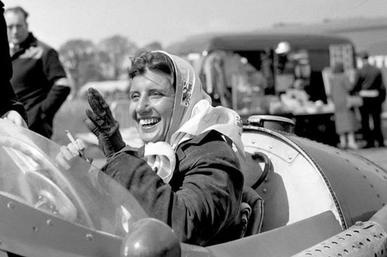 Maria Teresa de Filippis; first woman to race in F1
Maria Teresa de Filippis; first woman to race in F1
During the French GP at Reims, the sixth race of the season, works Ferrari driver Luigi Musso who was in 3rd position in the championship lost control of his car on lap 9 and was critically injured. He died later that day. The French GP would also be Fangio's last ever F1 race where he finished in 4th place in the out-dated Maserati. Hawthorn and Moss left France in equal first place in the championship with 23 points apiece.
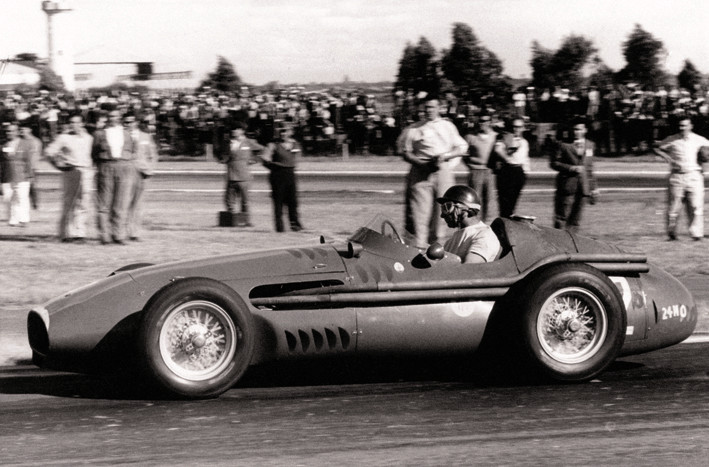 Juan Manuel Fangio driving a Maserati 250F
Juan Manuel Fangio driving a Maserati 250F
Two races later at the German GP held on the daunting 22 km Nurburgring course, the organizers opened the race to Formula 2 cars to increase the small field of F1 cars. On lap 11, Collins was pushing his Ferrari to the limit chasing down race leader Brooks in his Vanwall, but his Ferrari ran wide and he crashed. Collins did not survive his injuries. Moss was now 6 points behind championship leader, Hawthorn after the German GP.
Spark: Vanwall VW5 Tony Brooks 1958
The pivotal race of the season was the Portugese GP where Moss won comfortably while his closest rival, Hawthorn had been disqualified when it was deemed he'd bump started his engine whilst going in the wrong direction after spinning and stalling. Indeed, Hawthorn did bump start his car in the wrong direction but he was on the footpath of the road circuit when he did so. The footpath was not part of the track, argued the Ferrari team and Moss, who was on his warm down lap and had stopped to watch Hawthorn restart his car, confirmed to the stewards that the bump start did occur on the footpath. Swayed by Moss' testimony, the stewards reinstated Hawthorn's points for second place. Moss' sportsmanship was widely applauded but would prove costly. It was now Hawthorn on 36 points with Moss trailing on 32.
The last race of the 11 race season was the Moroccan GP and at this point Hawthorn was leading Moss, 40 - 32 in the championship. Hawthorn was on pole but the race was won by Moss with Hawthorn finishing second. However, the race was marred by a serious accident to the third Vanwall driven by Stuart Lewis-Evans when his engine seized sending him into the barriers at high speed. The Vanwall burst into flames and badly burnt, Lewis-Evans was airlifted to the UK but died as a result of his burns days later. Hawthorn had won the 1958 World Drivers Championship on 42 points (only his best 6 results counted) from Moss on 41 points. Moss' sportsmanship at Portugal had cost him the championship but Vanwall won the inaugural Manufacturer's Cup. 1958 was a year of many "firsts" but it was also a year of tragedy where 4 drivers died contesting the championship (American Pat O'Connor died during a pile-up at the Indy 500). Deeply affected by the deaths of his colleagues, Mike Hawthorn retired from racing immediately after winning the championship but he was killed in a road accident three months later.
New Additions: November 2018
Welcome to the November update. Firstly, I'd like to remind everyone of the Diecast Model Expo being held at the Rydges Hotel, 116 James Ruse Drive, Parramatta on 9 - 11th November. As I will be "room trading" at the hotel, I will not be able to attend the Friday night Granville Model Fair on 9th November. The good news is the two events are very close, probably 15-20 minutes drive so attendees of the Expo could easily visit the Granville fair (see my swap meets link for the address). As usual, please email if you would like to view any models while I'm at the Expo. It will be a great event, as always.

The theme this month seems to be Ferrari F1 models with 9 new additions from Brumm and Atlas. The highlights this month are the Ferrari 126C2's of Gilles Villeneuve and Didier Pironi from the Italian model maker, Brumm. Both cars have their body covers removed to show off the internals of the racing car, thus the engine and wiring are exposed as well as the radiators. The driver's seat belts are finely detailed with photo-etched parts The red body cover is also provided with the model in addition to a couple of trestles to support the cover to make an interesting workshop scene. The Pironi car #28 is without the driver but the Villeneuve version has the driver in the cockpit holding a blue/white sun umbrella. These are relatively expensive models however you must remember these are actually made in Italy.
Brumm: 1982 Ferrari 126C2 D.Pironi
Japanese Manga (comics) and Anime (animation) culture is not something I quite understand but has become a global phenomenon and their popularity continues to grow. All Manga characters seem to have oversized eyes through which the artists are able to convey emotion more easily and one of the most popular manga character is AstroBoy. So, what has this got to do with model cars? I came across a Toyota 86 which was adorned with some interesting graphics which turns out to be associated with a Japanese manga street racing series called "Initial D". This series focuses on the world of illegal Japanese street racing, where all the action is concentrated in mountain passes and with the drift racing style emphasized in particular. This Toyota 86 from Kyosho may not be your 'thing" but there's no denying, the graphics are beautifully done.
Also newly arrived but far too many to list below are more than 35 Autoworld/Racing Champions 1:64 vintage American Muscle cars, check them out in the "Misc Scales" stocklist. Well, that's it for another month. As mentioned above, I won't be attending the Granville Friday night Fair on 9th November as I'll be at the Diecast Model Expo from 9 to 11th November. Then on the following weekend I will be at the Collectormania Fair at Penrith (18th November). Until next month, happy collecting.
Formula One
- 1959 Cooper Climax T51, J.Brabham (24) Monaco GP (Brumm)
- 1949 Ferrari 166FL, J.M.Fangio (16) Equipo Argentino (Atlas)
- 1951 Ferrari 375, J.F.Gonzales (12) (Atlas)
- 1952 Ferrari 500 F2, A.Ascari (15) British GP (Brumm)
- 1952 Ferrari 500 F2, A.Ascari (101) World Champion (Atlas)
- 1976 Ferrari 312 T2, N.Lauda (1) (Atlas)
- 1979 Ferrari 312 T4, J.Scheckter (11) (Atlas)
- 1982 Ferrari 126C2, D.Pironi (28) 1st San Marino GP (Brumm)
- 1982 Ferrari 126C2, G.Villeneuve (27) 2nd San Marino GP (Brumm)
- 1987 Ferrari F1 87, G.Berger (28) (Atlas)
- 1967 Lotus BRM 43, G.Hill (8) South African GP (Spark)
- 1973 March Ford 731, J.Hunt (27) Monaco GP (Spark)
- 1956 Maserati 250F, Moss (34) 3rd Belgian GP (Matrix)
- 2018 Toro Rosso Honda STR13, B.Hartley (28) Race car (Minichamps)
- 2018 Toro Rosso Honda STR13, P.Gasly (10) Race car (Minichamps)
- 1957 Vanwall VW5, S.Moss (8) [Blister pack] (Altaya)
Le Mans
- 1959 Aston Martin DBR1, Moss/Fairman (1) 1st Nurburgring 1000km (Matrix)
- 2017 BMW M6 GT3, C.Mostert (90) FIA World Cup Macau (Spark)
- 2014 McLaren MP4-12C, Sarkissian/Dermird/Schmetz/van der Drift (16) Spa 24hr (Spark)
- 1984 Porsche 928 S, Boutinaud/Renault/Guinand (107) Le Mans (Spark)
- 1993 Porsche 911 Carrera Cup, Calderari/Pagotto/Keller (76) Le Mans (Spark)
ATCC/V8 Supercars
- 2016 Commodore VF, Lowndes/Richards (888) Sandown Retro Livery (Classic Carlectables)
- 2018 Commodore ZB, C.Lowndes (888) "Autobarn" V8 Supercar (Classic Carlectables)
- 1970 Ford Falcon GTHO, Super Falcon (10) Diecast Expo 2011 model (Armco)
American Racing
- 2013 Peugeot 208 T16, S.Loeb Pikes Peak Hill Climb w/ driver figure (Spark)
Road Cars
- 2011 Bentley Continental GT in liquid mercury grey (Minichamps)
- 1935 Fiat 508 CS Balilla Berlinetta in red (Starline)
- 1947 Fiat 1100 Delivery Van in grey (Brumm)
- 1948 Fiat 1100S in black (Starline)
- 1958 Fiat 500 Sport in white/red stripe (Spark)
- 1968 Fiat 500 L in orange (Spark)
- 1980 Fiat Panda 30 in red (Brumm)
- 2011 Mitsubishi Lancer Evo X, Kyosho Alice Motors (505) (Japanese Anime) (Kyosho)
- 1995 Porsche 993 GT in white (Spark)
- 2015 Toyota 86, Initial D JKB car in blue/pink (Japanese Manga) (Kyosho)
After Thoughts: In the news recently, was talk of a future F1 GP near Hanoi, Vietnam, quite possibly as early as 2020. This was first mooted by Bernie Ecclestone when he was in charge of F1, however the idea was not pursued as the Asian region already had enough races (China, Japan, Singapore and Malaysia). But with the demise of Malaysia, the Hanoi venue is now being seriously considered. There is however, one geographic region that could do with another GP or two and that is South America. At the moment there is only the Brazilian GP but this was not always the case, in fact the first ever Formula One race in South America was actually held in Argentina in 1953. This was also the first ever F1 race outside of Europe (the Indy 500 was part of the world championship from 1950-60 but was run to American racing regulations and not regularly contested by F1 drivers). Argentina hosted 20 Grand Prix between 1953 -1998.
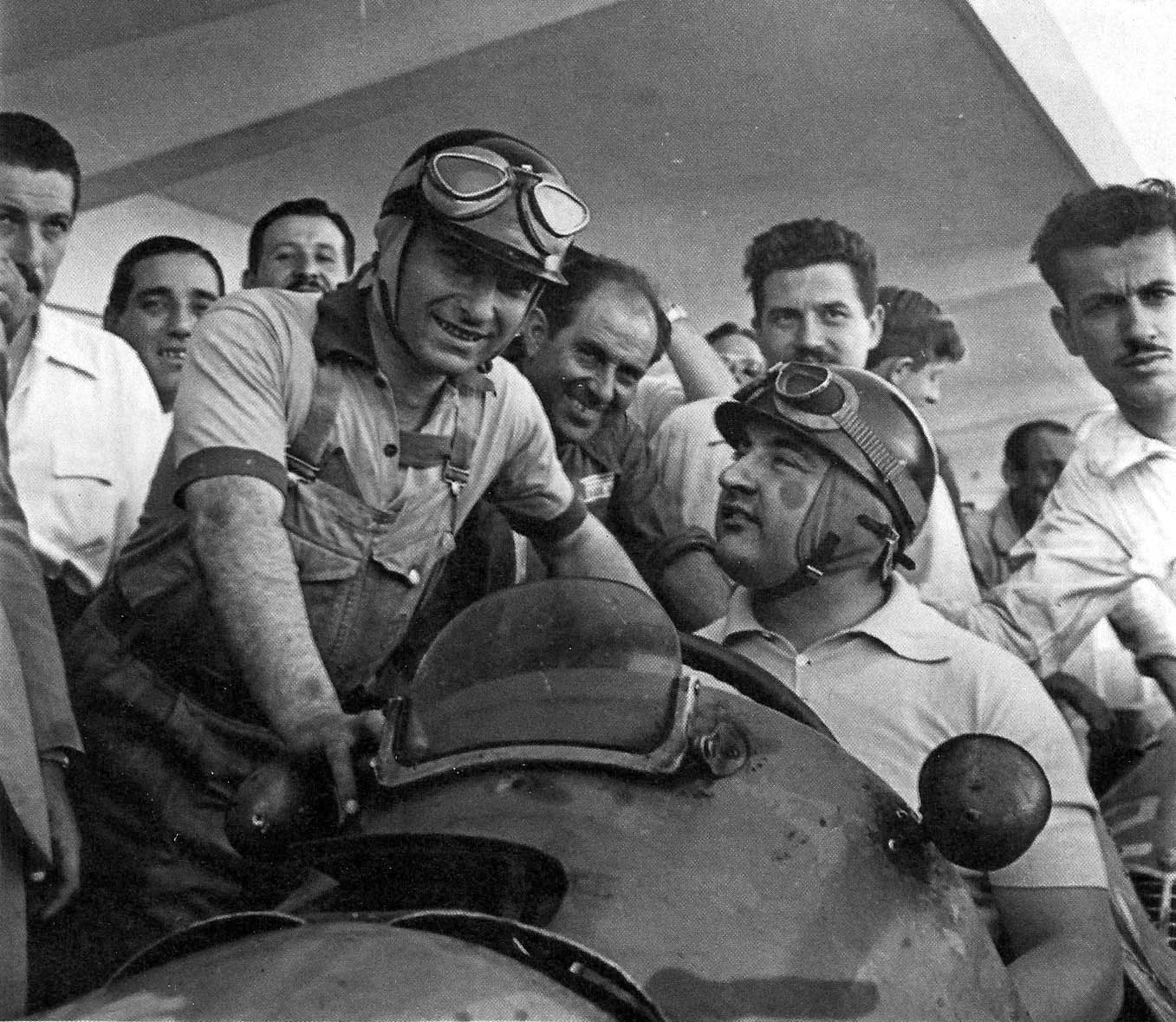 Fangio (left) & Gonzales practice for the 1953 Argentine GP
Fangio (left) & Gonzales practice for the 1953 Argentine GP
The driving force behind the creation of a permanent racing circuit was Juan Peron, the Argentine President. The majority of Argentines were very poor, they even had a special name for them; the "shirtless ones" and Peron decided to give them a motor race because it was cheaper than feeding them. So a circuit, to be named "Autodromo 17 de Octubre" (named after the day Peron's supporters had rallied to demand his release from jail) was designed and built in ten months just outside of Buenos Aires. Grandstands and viewing enclosures were built to accommodate up to 250,000 spectators and a spider web of road was laid down. By moving straw bales around, the circuit could be altered into different configurations and four configurations were used for the Argentine GP between 1953 to 1998. From 1953 - 1960, the No.2 layout was used. Although it was a fine thing to build facilities for a quarter of a million people, it would prove to be impossible to control that many in a limited space.
 Autodromo 17 de Octubre, circuit no.2 1953 (Gustavo Giradelli)
Autodromo 17 de Octubre, circuit no.2 1953 (Gustavo Giradelli)
For the inaugural Argentinian GP in 1953, Peron chartered a plane to bring the top drivers over from Europe, including reigning champion Alberto Ascari and they were feted as the world's finest, fastest and most daredevil drivers who had come to compete against local heroes Fangio, Gonzales and Galvez. So on raceday on 18 January, with temperatures hovering around 37 degrees celsius. the shirtless began to pour into the circuit. The Grand Prix was scheduled to start at 4:00pm but by noon the enclosures were full; a quarter of a million waited for the start of the race. By 2 o'clock the crowd were becoming increasing impatient, the enclosures were packed solid, it was very hot and thousands more were trying to force their way in. Outside in the streets, police were skirmishing with fans who couldn't get in; soon openings in the fence were cut and thousands poured in but the enclosures are full and they spilled onto the track. The drivers wanted to postpone the race until the crowd had been moved back but it was clear this was going to be impossible and in the vain hope that the spectacle of the race would calm the increasingly belligerent crowd, the race was started. As the cars lapped the twisty circuit, the road got narrower and narrower as the cheering crowd edged closer and closer to the speeding race cars. Sensing imminent disaster, some drivers peeled into the pits and stayed there.
Then on lap 21 a stub axle broke on a Cooper, sending the wheel bouncing into the crowd shattering flesh and bone. A few laps later, Nino Farina running third in his Ferrari 500, pitched his car into a spin to avoid a boy who had darted onto the track. His Ferrari spun into the crowd, sending bodies flying in all directions. News of the fatalities spread swiftly, inciting mass panic. Another boy scampered across the track and was killed instantly by a Cooper. Ambulances sent to retrieve the bodies, raced to the accident scene, driving onto the track in the opposite direction to the race cars. One ambulance driver, faced with an on-coming F1 car veered, lost control and crashed into the crowd, killing two more spectators. The driver threw the bodies into his ambulance and then rushed to the main accident scene. A Gordini also lost a wheel, injuring yet more spectators. After three hours and 97 laps the race was finally won by Alberto Ascari (Ferrari) with local hero Jose Froilan Gonzales in 3rd (Maserati). Juan Manuel Fangio retired after 36 laps in his Maserati. Peron had quietly slipped away before the chequered flag. Officials claimed that ten people were killed and 30 injured but some accounts put the death toll as high as 30. That would make the inaugural Argentine GP the most deadliest GP in history.
Quartzo: R. Arnoux Renault RS01/3 1979 Argentinian GP
After Peron was removed from power, the circuit he built was renamed Autodromo Juan y Oscar Galvez in honour of Oscar Galvez and his brother Juan, both revered Argentine racing drivers. The Autodromo is now a 45,000 capacity circuit which is still used for motor racing.
New Additions: October 2018
Another month has passed and we are in October already; almost another year has gone by. Firstly I must apologise as I had forgotten last month to let you know I was attending the All British Car day on the 23rd September. It was great Spring day with lots of cars on display and thank you to all who dropped by my marquee. OK onto this month's highlights. Connaught Engineering was a British Formula One constructor that operated from 1950 -1959. In 1950 the company produced its first single-seater Formula 2 car with the "A" designation. It was powered by a 2.0L engine from Lea-Francis and was re-engineered extensively that it essentially became a Connaught engine. The 1952 and 53 World Championship races were open to Formula Two cars which allowed the Connaughts to compete. Connaught drivers were placed 4th and 5th in the 1952 British GP but Stirling Moss (the subject for Spark's model) retired from his only outing in the Connaught at the Italian GP. Roy Salvadori, the subject of Spark's second Connaught release was similarly unsuccessful driving in the 1953 season with five "Did Not Finish" against his name.
Spark: Connaught A 1953 Roy Salvadori
1984 saw a record number of Australians competing in the Le Mans 24 hour race. Vern Schuppan and Alan Jones shared a Kremer Prosche 956, Rusty French in the other Kremer car, Alan Grice in the Charles Ivey Racing Porsche, Neil Crang piloting a Spice Tiga and Peter Brock teaming up with Larry Perkins in the John Fitzpatrick prepared Team Australia Porsche 956 which was sponsored by Bob Jane T-Mart. Spark has just released the Brock/Perkins Porsche some 12 years after Biante released the model as part of their Motor Racing Legends series. This is a great chance for those who missed out on the Biante version to add this important Brock car to their collection.
Spark: Porsche 956 Brock/Perkins 1984 Le Mans
OK, it's a wrap for this month as I'm running way behind schedule. Only one model fair this month, the regular monthly Friday night fair at Granville on 12th October. Just a reminder of the Diecast Model Expo next month from 9th - 11th November at the Rydges Hotel, Parramatta. Until next month, happy collecting.
Formula One
- 1962 Brabham Climax BT3, J.Brabham (16) German GP (Spark)
- 1952 Connaught A, S.Moss (32) Italian GP (Spark)
- 1953 Connaught A, R.Salvadori (15) German GP (Spark)
- 1987 Larousse Lola Ford LC87, P.Alliot (30) Monaco GP (Spark)
- 1993 Ligier Renault JS39, M.Brundle (25) South African GP (Spark)
- 1976 McLaren Ford M23, J.Hunt (11) 1st French GP (Spark)
- 1981 Volvo F12 Team Lotus John Player Special race transporter (IXO)
Formula E
- 2016/17 DS Virgin Racing DSV-02, S.Bird (2) 1st New York ePrix (Spark)
- 2016/17 Techeetah Renault Z.E.16, J-E Vergne (25) New York ePrix (Spark)
American Racing Series
- 2001 Chev Corvette C5R GTS, Fellows/Kneifel/Freon/O'Connell 1st Daytona 24h (Action)
- 1952 Lancia B20, Maglioli/Bornigia (26) 4th Carrera Panamericana (Spark)
- 1966 Shelby Daytona Coupe, Schlesser/Heck/Johnson (13) class winner Daytona 24hr (TSM)
Le Mans/Sports Car Racing
- 1971 Alfa Romeo Tipo 33.3, Adamich/Lennep (2) 2nd Targa Florio (TSM)
- 1954 Aston Martin DB3 S, Shelby/Frere (22) Le Mans (Spark)
- 1954 Cunningham C4-R, Spear/Johnston (2) Le Mans (Spark)
- 1974 Porsche 911 Carrera RSR, Muller/v.Lennep (5) Brands Hatch 1000 km (TSM)
- 1984 Porsche 956L, Brock/Perkins (34) 'Bob Jane' Le Mans DNF (Spark)
ATCC
- 1987 Commodore VL, P.Brock/D.Parsons/P.McLeod (10) Bathurst winner (Biante)
- 1987 Commodore VL, P.Brock/D.Parsons (05) Bathurst DNF (Biante)
- 1967 Ford Mustang GTA, P.Geoghegan (1) 1st ATCC (removable bonnet) (Armco)
Road Cars
- 1931 Alfa Romeo 2300 in dark red/black (Brumm)
- 1962 Aston Martin DB4 convertible in metallic gray (Spark)
- 1962 Aston Martin DB4 Convertible in metallic blue (Spark)
- 1965 Aston Martin DB6 in dark green (Spark)
- 1969 Aston Martin DB6 Mk II in silver (Spark)
- 1955 Austin Healey 100S Coupe in red (Spark)
- Chevrolet Corvette ZR1 plain body version (Spark)
- 1960 Daimler Majestic Major RHD in metallic gray (Neo)
- Falcon XB GT MFP Pursuit Mad Max Movie car (ACE)
- 1983 Jaguar XJS Lynx Eventer in metallic dark blue (PremiumX)
- Lamborghini Gallardo LP560-4 in white (Autoart)
- 1964 MGB Roadster Hard Top in white/royal blue (Spark)
- 1983 Nissan 240RS in white (Spark)
- 1979 Porsche 911 (930) Turbo 3.3 in red (Maxichamps)
- 1967 Sunbeam Alpine Tiger Mk2 in red (Spark)
After Thoughts: The motor sport world recently lost two legends with the passing of Don Panoz and Bob Jane. Don Panoz was an influencial figure who co-founded Panoz cars and created the American Le Mans Series (ALMS) in 1999 which brought Le Mans-spec racing to North America. ALMS grew into a prominent racing series before a merger in 2012 which created the current IMSA WeatherTech Sportscar Championship. Before venturing into the world of car racing, Panoz was a pioneer in the medical field, amongst his achievements was the invention of the time-release patch and the founding of several pharmaceutical companies. In 1989 Panoz funded a company started by his son called Panoz Auto Development and using his business acumen he was able to enlist the support of motoring figures such as Mario Andretti with the goal of entering a Panoz race car in the Le Mans race. So, Panoz Motorsport was founded in 1997 and entered the Panoz Esperante GTR-1 in Le Mans that year.
Action: Panoz GTR-1 Le Mans 1997
The Esperante GTR-1 was unique compared to its track rivals in that the engine was located in front of the cockpit. Although locating the engine behind the front axle giving the car a balanced mid-engine layout, it gave the car some usual proportions; a large nose with a bulging intake in the centre and a cockpit placed far back in the body. The Esperante was powered by a 6.0L Ford V8 engine.
Spark: Panoz LMP1 Le Mans 2003
In addition to owning the American Le Mans Series at one stage and a racing team, Don Panoz also owned Mosport International Raceway and Road Atlanta as well as running the Sebring International Raceway. In 2010 when the Ben Bowlby designed Deltawing was rejected as the car for the IndyCar series, Bowlby worked with Don Panoz to enter the car as a "Garage 56" (experimental vehicle) entrant in the 2012 Le Mans race. The Deltawing continues to be raced in the US with the cars being built and developed at the Panoz Motorsport headquarters in Georgia. Don Panoz passed away on the 11th September from pancreatic cancer; he was 83.
Robert "Bob" Jane was a legend of motor racing in Australia who won the Armstrong 500 (the race that eventually became the prestigious Bathurst 1000) four times in a row. He also won the Australian Touring Car Championship four times. His first Armstrong 500 win was in 1961 when the race was held at Phillip Island, Victoria driving a Mercedes 220SE; his last Armstrong win in 1964 was at Bathurst with a Ford Cortina GT. Probably the most enduring memory would be his drives in the thundering Chevrolet Camaro ZL-1 to clinch the ATCC titles in 1971 and 72.
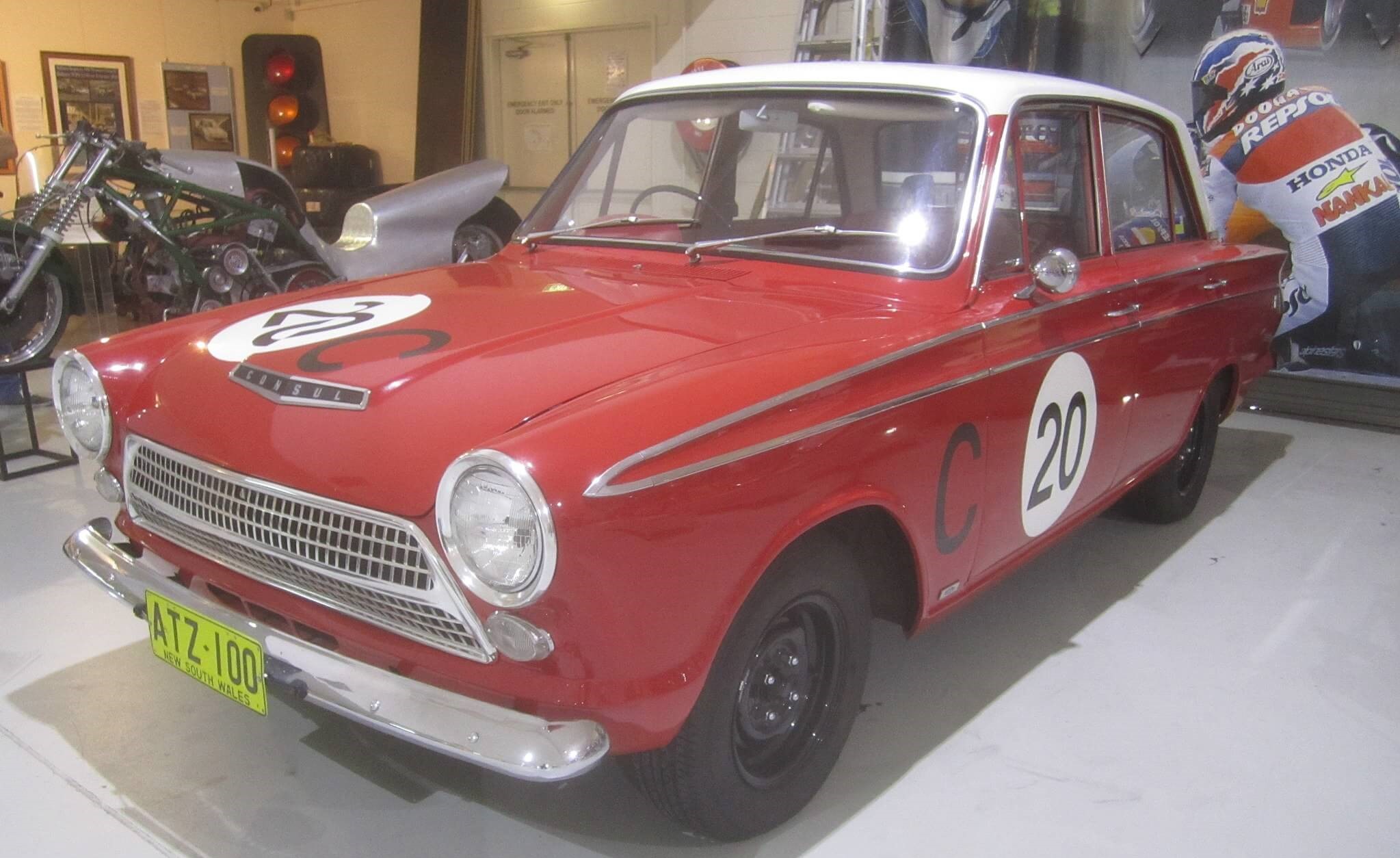 Cortina GT Bob Jane 1st Armstrong 500 1963 (Sicnag)
Cortina GT Bob Jane 1st Armstrong 500 1963 (Sicnag)
In 1965 Jane opened up his first Bob Jane T-Marts store in Melbourne and later hundreds of his iconic retail tyre outlets would be opened around Australia.
In the early 1970's Bob Jane purchased Calder Park Raceway in Melbourne and in 1987 the "Thunderdome", a NASCAR style high-banked oval was completed. Jane is credited with bringing stock car racing to Australia with the first ever NASCAR race to be run outside of North America being held on the Thunderdome in 1988. Promoted by Jane, Calder Park also hosted the Australian Grand Prix from 1980 to 1984 in the hope that it would eventaully host the first FIA World Championship Grand Prix but would lose out to the street race in Adelaide. Jane also owned the Adelaide International Raceway. Jane retired from competitive racing at the end of 1981; at the time he was competiting in a 6.0L Chevrolet Monza in the Australian Sports Sedan Championship. In recent years Jane was inducted into the Supercars Hall of Fame and the Australian Motor Sport Hall of Fame. Bob Jane passed away on 28th September from prostate cancer; he was 88.
New Additions: September 2018
Welcome to my September update. Firstly, thank you to everyone who called into my garage during the Shannons Sydney Classic Day at the Sydney Motorsport Park (Eastern Creek) last month. Apart from the chilly wind that seemed to blow directly through the garages, it was a great day with the organisers reporting record attendance numbers and sold-out garage merchandising space. If you missed this year's event please mark it in your diary for next year. The new additions for this month include a few more Formula E cars which Spark are producing at a prodigious rate. There's also a number of older "restocked" models to tempt you, so here are my highlights for this month.
The "Custom Made Harry Stiller Racing Team" was just another small, under-funded Coswoth DFV powered privateer team that briefly graced the Formula One grids in the 1970's. Usually these teams lasted a year if they had enough money, but many only managed a few races as was the case with Harry Stiller's team. But this team had a notable Australian connection. Harry Stiller, who passed away this year at the age of 79 was a double British Formula 3 champion (1966-67) and he was the works F2 driver for Cooper, Lola and Merlyn. After retiring from racing, Stiller became an entrant with his cars competing in F3, Formula Atlantic, F5000 and in 1975 stepping up into F1 for four races. And the Australian connection? The driver in Stiller's customer Hesketh Ford 308 was Alan Jones, giving Jones his first drive in F1. Spark has modelled Jones' Monaco GP car (his second F1 race) in which he qualified a respectable 18th but retired with a broken wheel. After Stiller withdrew from F1, Jones joined Graham Hill's Embassy team for 4 races in 1975 where he scored his first F1 points. Spark also recently released Jones' Embassy Hill car.
Spark: Hesketh Ford 308 1975 Alan Jones
The 24 hours Nurburgring race is a 24-hour annual touring car and GT endurance race held on the 25-km long Nordschleife (North loop) circuit. The length of the circuit allows up to 200 cars to race with Audis, Porsches, BMW's and Mercedes dominating the entry list. Amongst all the German machinery in the 2017 race were a hand-full of Japanese cars, mostly from the Toyota stable trying to be the first Japanese car to win since the race started back in 1970. After 24 hours, the best placed Japanese car, finishing in 25th place was the Lexus RC entered by the Toyota Gazoo Racing team driven by an all-Japanese line-up. For the record, an Audi R8 LMS won the 2017 race.
Spark: Lexus RC 2017 Nurburgring 24 hour
Well that's it for another month. This month there is the regular Friday night model fair at Granville on 14th September and then the Collectormania fair on 16th September. Due to a clash of dates, I won't be attending the Hawkesbury Model fair which is on the 15-16th. There aren't too many model fairs in Sydney each year so it's disappointing when a clash of dates occur. Until next month, happy collecting.
Formula One
- 1963 Brabham Climax BT7, D.Gurney (18) 2nd Dutch GP (Spark)
- 1967 Brabham Repco BT19, D.Hulme (26) Belgian GP (Spark)
- 1977 Ferrari 312 T2, G.Villeneuve (21) Canadian GP (Panini Collection)
- 1975 Hesketh Ford 308, A.Jones (26) Monaco GP (Spark)
- 1961 Porsche 718, Dan Gurney (12) 2nd French GP (Spark)
- 1958 Vanwall VW5, T.Brooks (4) 1st Belgian GP (Spark)
- 1977 R.Petersen Helmet Team Tyrrell (TSM)
- 1978 Gilles Villeneuve Helmet - Ferrari (TSM)
Formula E
- 16/17 Next EV 700R Nio, O.Turvey (88) Formula E New York Eprix Season 3 (Spark)
- 16/17 Renault Z.E.16 Techeetah, S.Sarrazin (33) 3rd Formula E New York EPrix (Spark)
- 16/17 Venturi VM200-FE-02, S.Sarrazin (4) Formula E HongKong EPrix (Spark)
American Racing
- 1969 Brawner Hawk III Ford, M.Andretti (2) Indy 500 winner (Spark)
- 1968 Eagle Ford Mk4 AAR, D.Gurney (48) 1st Riverside USAC (Spark)
- 1969 Eagle Weslake Ford Mk7, D.Gurney (48) 2nd Indy 500 "Olsonite" (Spark)
- 1966 Lola T70 Mk2 Ford, D.Gurney (30) Winner Bridgehampton Can Am (Spark)
ATCC Cars
- 2008 Falcon BF, Lowndes/Whincup (888) Bathurst winner Vodafone (Classic Carlectables)
Le Mans, Carrera Cup, etc
- 1934 Alfa Romeo 8C, P.Etancelin/L.Chinetti (9) Winner Le Mans (Spark)
- 1992 BMW M3 E30, Soper/Martin/Danner (5) 1st Spa 24 hour (Spark)
- 1966 Ford GT40 Mk ll, P.Hawkins/M.Donohue (4) DNF Le Mans (Spark)
- 1966 Ford GT40 Mk ll, G.Hill/B.Muir (7) Le Mans (Spark)
- 2017 Lexus RC, Iguchi/Matsui/Gamo/Yabuki (170) Nurburgring 24Hr (Spark)
- 1982 Porsche 956L, Ickx/Bell (1) Le Mans winner (Spark)
- 1983 Porsche 956, V.Schuppan/Holbert/Haywood (3) Le Mans winner (Vitesse)
- 1983 Porsche 956, Fitzpatrick/Hobbs/Quester (11) Le Mans incl. decals (Vitesse)
- 2016 Porsche 911 GT3, M.Campbell (7) Aust. Carrera Cup Champion (Spark)
- 1988 Spice Ford SE 87C, Grand/Terrien/Guenoun (131) Le Mans (Spark)
Road Cars
- 1967 MGC Convertible in white (Spark)
- 1956 Triumph TR3 in black (Spark)
After Thoughts: Behind every world championship winning driver is a championship winning team. In motorsports a team is made up of a multitude of people; from truck drivers, mechanics, engine builders, tyre techicians, aerodynamicists, designers, race engineers and technical directors just to name a few. One techinical director who enjoyed considerable success with Scuderia Ferrari in the 1960'sand 70's was Mauro Forghieri.
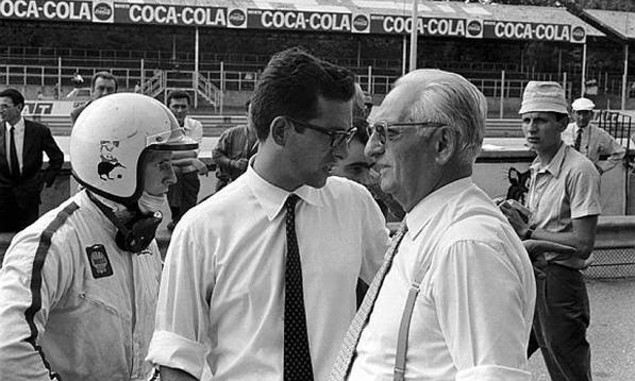 Chris Amon, Mauro Forghieri and Enzo Ferrari
Chris Amon, Mauro Forghieri and Enzo Ferrari
Forghieri's rise began after the imfamous "Laura Affair". Laura Garello was Enzo Ferrari's wife and mother of Dino. Dino's death in 1956 had a devastating effect on Enzo and wallowing in despair, he started to distance himself from the running of his business. So Laura started to involve herself more in the management of the factory but her tyrannical style soon made her very unpopular and the Ferrari Sales Manager, Girolamo Cardini was the constant victim of her verbal tirades. Fed up with the abuse, Gardini gave Enzo an ultimatum; either Laura backs off or he would leave the company. Unsurprisingly, Cardini had to pack up and leave through the back door. But the Commendatore did not anticipate the huge backlash from Cardini's dismissal. After hearing the news, top engineers Carlo Chiti, Giotti Bizzarrini, team manager Tavoni and five other senior engineers formally opposed the decision of Cardini's firing. In a remarkable situation, eight of the most influencial engineers who made Ferrari the team to beat, were sacked for protesting against Ferrari's tyrannical behaviour.
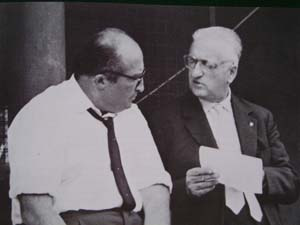 Carlo Chiti (L) with Enzo Ferrari in happier times
Carlo Chiti (L) with Enzo Ferrari in happier times
At the time of "The Great Walkout" in 1961, Mauro Forghieri was a 27 year-old trainee engineer at Maranello, fresh out of university. Almost overnight Forghieri found himself appointed the new Ferrari technical director. The sacking of Chiti and the others came at a bad time as Ferrari was facing strong competition from the likes of Lotus in F1 and Jaguar and the Shelby Cobra in GT racing. The racing world didn't stop while Forghieri learned his job and 1962 was an unsuccessful year for Ferrari. But in 1963 they hired John Surtees and with feedback from Surtees, Forghieri designed the V8 powered Ferrari 158 in which Surtees would win the 1964 F1 Championship.
Hotwheels: Ferrari 312 C. Amon 1967
In 1970, Forghieri designed the Ferrari 312 series, consisting of the 312 and 312B Formula One cars and the 312P and 312PB sportscars. He also designed the first transversal automatic gearbox and Ferrari's first turbo engine. Under Forghieri's guidance Ferrari won 54 Grand prix and the driver's F1 world championship title four times, with John Surtees (1964), Niki Lauda (1975, 1977) and Jody Scheckter (1979). Ferrari won the F1 constructor's world title eight time.
Brumm: Ferrari 312PB 1972 Daytona 6 hour
In 1987 Forghieri left Ferrari after a career spanning almost thirty years at Maranello. He left to become the technical director of Lamborghini Engineering where he designed a new V12 normally-aspirated engine for the new F1 regulations. The engine saw service in the Larousse F1 car in 1989-90. In 1992 Forghieri then joined the re-emerging Bugatti marque as technical director until leaving in 1994. Forghieri would be considered as one of Ferrari's greatest engineer, the last of a breed of "total engineers" that could design an entire car, rather than just a component or section, though it was the design of engines he enjoyed the most.
New Additions: August 2018
Welcome to another monthly update. Firstly, due to the lateness of this update, I'd like to remind everyone I'll be attending the annual Shannons Sydney Classic Day at the Sydney Motorsport Park (Eastern Creek) on 12th August. Come and visit my stall in Garage 19 where I'll have a large selection of models on display (and for sale of course). Please note, all vehicles coming through the gate will receive a show bag and inside there is a lucky number; please take this number with you and as you visit each garage, check your number against the number displayed in the garage. If they match, claim your prize directly from the garage operator. OK, now for this month's highlights; the Sauber team began racing in F1 in 1993 and impressively scored points in it's debut race. Soon the Sauber team became Mercedes' factory-backed team but in later years the team used various engines such as Ford, Petronas (Ferrari) and BMW . Then from 2010 to 2017 Sauber turned to Ferrari again using their year-old engines and enjoyed limited success but for 2018, the team had secured a contract to use current spec Ferrari engines. In addition, the team signed a multi-year technical and commercial partnership contract with Alfa Romeo with the team renamed to Alfa Romeo Sauber F1. Minichamps have just released the 2018 Sauber car of Marcus Ericsson with it's simple but effective Alfa livery.
Minichamps: Sauber Ferrari C37 M.Ericsson
By the mid-1980's Alan Jones' international racing career was coming to an end. His two year F1 come-back with Haas Lola in '85 and '86 was not successful so in 1987 he went Sportscar racing with Toyota Team TOM'S competing in the All Japan Sports Prototype Championship. The Japanese team also entered that year's Le Mans 24 hour race with their Toyota 87C's but the attempt ended after just 19 laps for Jones' car and 39 laps for the sister car. Spark have just released Alan Jones' Le Mans Toyota and although it withdrew very early, it's still a highly collectible car for those who collect Aussie drivers racing overseas.
Spark: Toyota 87C A.Jones 1987 Le Mans
At the end of the 1920's Gastav Schumacher ran a mechanical workshop in the city of Yonkers near New York. He was talented in the fields of automotive engineering, design and metalworking and was enlisted by the son of a rich industrialist to design and build a car similiar to that of Frank Lockhart in which Lockhart had tragically attempted a land speed record. Schumacher purchased a chassis and engine from the car company Stutz and began to design an open race car influenced by the design of Lockhart's car. But the stockmarket crashed and the wealthy customer was no longer able to finance his project and Schumacher ended up without a customer for his special automobile. Undeterred, Schumacher continued building the car and used it until the mid 1930's as his personal transport. Autocult has a reputation for producing rare and beautiful cars and this limited edition (333 pieces) Stutz BB145 Schumacher Special is no exception.
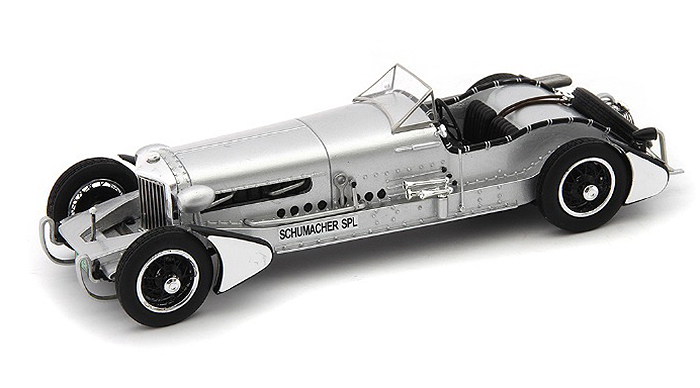 Autocult: Stutz BB145 Schumacher Special
Autocult: Stutz BB145 Schumacher Special
OK that's the update for another month and my apologies for its lateness. As well as the Shannon's Classic day on 12 August as mentioned earlier, there's the regular Model Fair at Granville on the Friday evening of 10 August (very busy weekend for me). I hope to see you there, until then happy collecting.
Formula One
- 1961 Cooper Climax T53, R.Penske (6) 8th US GP (Spark)
- 1956 Ferrari D50, J.M.Fangio (1) (Atlas)
- 1961 Ferrari 156, W. von Trips (4) (Atlas)
- 1971 Ferrari 312 B2, C.Regazzoni (5) (Atlas)
- 1974 Hesketh Ford 308, J.Hunt (24) 3rd Swedish GP (Spark)
- 1975 Hesketh Ford 308, J.Hunt (24) 1st Dutch GP (Spark)
- 1975 Hill Ford GH1, A.Jones (22) British GP (Spark)
- 1987 Larousse Lola Ford LC87, Y.Dalmas (29) 5th Australian GP (Spark)
- 1966 Matra MS5, J.Surtees (24) French (de Reims) F2 GP (Spark)
- 1969 Matra-Ford MS10, J.P.Beltoise (8) 6th South African GP (Spark)
- 2018 Sauber Ferrari C37, M.Ericsson (9) Minichamps
- 2018 Toro Rosso Honda STR13, B.Hartley (28) show car (Minichamps)
- 1958 Vanwall VW5, S.Moss (1) 1st Dutch GP (Spark)
- 1985 Zakspeed 841, C.Danner (30) Belgium GP (Spark)
Formula E
- 2016/17 Next EV NIO Team, N.Piquet Jr. (3) ePrix Monaco season 3 (Spark)
- 2016/17 Renault e.dams Z.E.16, S.Buemi (9) 1st ePrix Hong Kong Season 3 (Spark)
- 2017/18 Audi e-Tron FE04, L.di Grassi (1) (Audi Sport release, model by Spark)
- 2017/18 D.Abt (66) (Audi Sport release, model by Spark)
Le Mans
- 2005 Aston Martin DBR9, Twin set; celebration of Silverstone/Sebring wins (IXO)
- 1966 Ford GT40 Mk ll, F.Gardner/Whitmore (8) Le Mans (Spark)
- 1926 Lorraine-Dietrich B3-6, R.Bloch/A.Rossignol (6) LM Winner (IXO)
- 1986 March 84G Porsche, Los/Touroul/Crang (66) Le Mans (Spark)
- 1988 Nissan R88C, A.Grice/W.Percy/Wilds (32) Le Mans (Spark)
- 1987 Porsche 962C, Bell/Stuck/Holbert (17) 1st Le Mans (Spark)
- 2016 Porsche 919 Hybrid, Webber/Hartley/Bernhard (1) Le Mans (IXO)
- 1978 Renault Alpine A442B, D.Pironi/JP Jaussaud (2) Le Mans winner (Spark)
- 1987 Toyota 87C, A.Jones/Lees/Elgh (36) Le Mans (Spark)
American Racing
- 1954 Austin Healey 100S, Shelby/Jackson-Moore (8) Carrera Panamericana (Spark)
- 2008 Porsche 911 GT3 RSR, Law/Neiman/Davison (44) Sebring 12h (Minichamps)
Road Cars
- 1991 Rolls Royce Silver Spur II in dark blue/beige top (TSM)
- 1928 Stutz BB 145 Schumacher special in silver (Autocult)
After Thoughts: A shocking surprise - the current state of Formula E. As the Formula E racing series for open-wheel electric race cars starts its 5th season later this year, it has defied the odds and has succeeded when so many other series have failed (anyone remember A1GP?). The ABB FIA Formula E Championship is the world's first fully-electric international single-seater street racing series and was conceived by Jean Todt, the president of FIA but it was Alejandro Agag who organised the series and is the current CEO of Fornula E. The championship is currently contested by ten teams with two drivers each and racing takes place on temporary city-centre circuits which are 1.9 to 3.4 kilometres in length. Just like F1, the championship consists of two titles - one for drivers and the other for teams and the points system also follows the one used in F1 with the exception that the pole winner scores an additional 3 points. Also a point is awarded to the driver in the top 10 with the fastest lap.
Spark: Renault e-Dams Z.E. 2016/17
The races, known as E-Prix lasts for about 50 minutes with each driver making one mandatory stop to change cars. A minimum time is enforced for the changeover for safety reasons. During the race the drivers have a maximum power of 180kW available but unique to Formula E is something called "Fanboost" where fans have a direct input to the racing. Fanboost gives fans the chance to vote for their favourite driver and award them an extra boost of power during the race. The three drivers with the most Fanboost votes are awarded a burst of power, which they can deploy in a 5 second window during the second half of the race. Fans can vote for their driver in the 6 days prior to, and leading up to 6 minutes into, each race.
For the first season (2014-15) all teams were supplied an electric racing car built by Spark Racing Technology called the Spark-Renault SRT 01E. The chassis was designed by Dallara, with the electric motor developed by McLaren and the battery system created by Williams Advanced Engineering. The car was able to accelerate from 0-100kph in 3 seconds with a maximum speed of 225 kph. Since the second season, regulations allowed new powertrain manufacturers, who can build the electric motor, inverter, gearbox and cooling system but the chassis and battery stayed the same. There were nine manufacturers creating powertrains for the 2016-17 season including ABT Schaeffler, DS-Virgin, Jaguar, Mahindra, NextEV TCR, Renault and Venturi.
Spark: Audi Sport ABT Schaeffler 2017/18
For season 5 (2018-19) the radical Gen2 Formula E car will come onstream and the new car, the Spark SRT05E again developed by Dallara, doesn't looks like any conventional race car. For a start, the car does not have a conventional rear wing and with much improved power and range the mandatory pit stops to change cars will be eliminated for this season. Also BMW and Nissan have announced they will be joining Formula E as powertrain suppliers and Mercedes-Benz and Porsche will become involved in season 6.
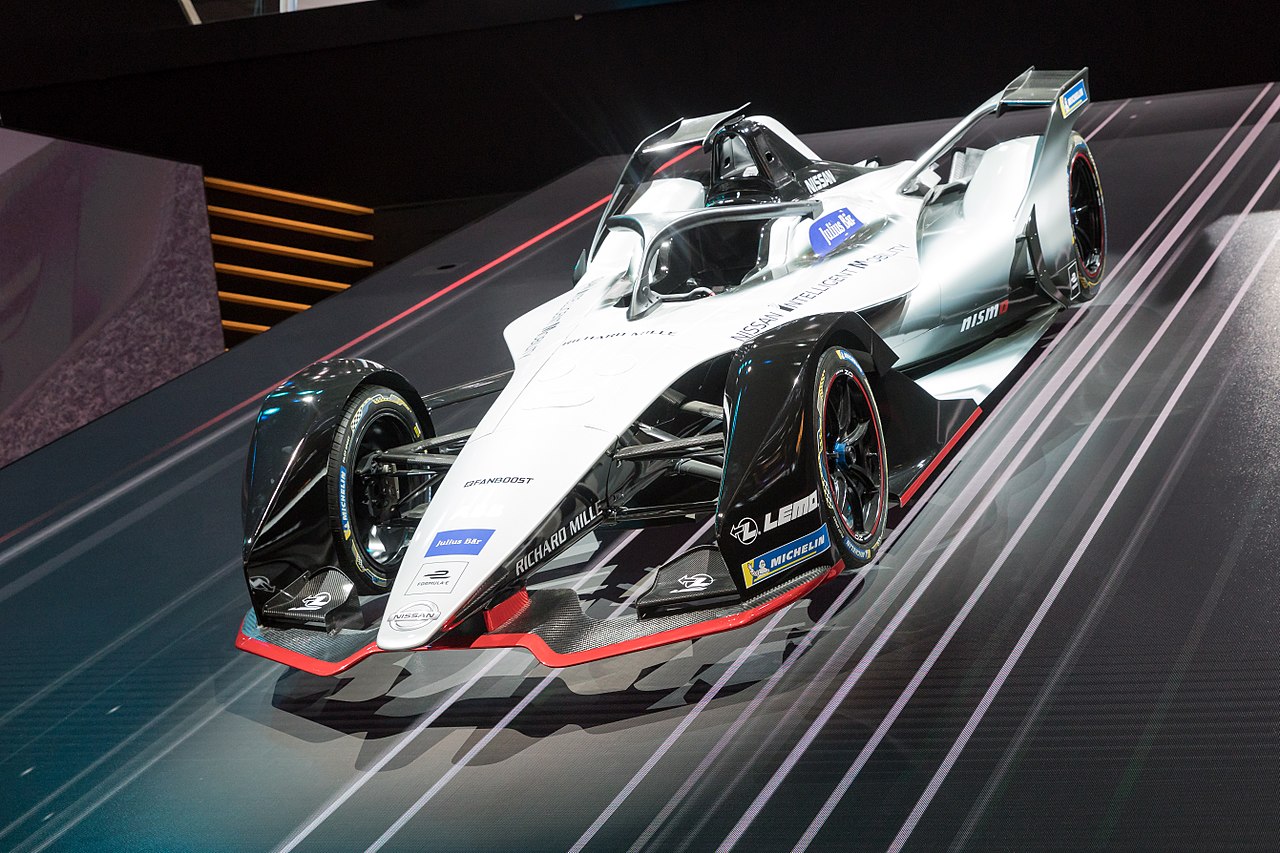 Gen 2 Formula E car (Matti Blume)
Gen 2 Formula E car (Matti Blume)
Formula E was conceived to break the mould and to appeal to a new generation of fans; the concept has succeeded spectacularly and has a very bright future.
New Additions: July 2018
Welcome to my July update. It's the middle of winter and I'm struggling with a cold; I hope you are all fairing much better. Never mind, I just have to soldier on. OK, so what are the highlights for this month ... it was no surprise when Toro Rosso announced late last year that Daniil Kvyat was leaving the team and Pierre Gasly would be his replacement. Then later Carlos Sainz Jr. left for Renault and his replacement was New Zealander Brendan Hartley. Hartley, a Le Mans winner and two-time FIA World Endurance Champion was a surprise but welcomed announcement having been previously dropped as a Red Bull Junior Team driver in 2010. Hartley became the nineth NZ driver to race in F1 after Mike Thackwell who last raced in 1984. Spark has reproduced his 2017 Abu Dhabi Toro Rosso where he finished in 15th place. So far this year Hartley has been out-performed by his team mate and already there are rumors of his imminent sacking before the season ends; such is the cut-throat atmosphere at Toro Rosso.
Spark: Toro Rosso STR12 B.Hartley 2017
Group 5 was an FIA motor racing classification that ran from 1966 to 1982 and was applied to four distinct categories. From 1976 to it's final year in 1982, Group 5 was for Special Production Cars, a liberal silhouette formula based on homologated production vehicles. Although the rules allowed extensive modifications, the width of the car body was restricted, so the cars were built with standard body widths but with wide mudguard extensions. The regulations required only the bonnet, roof, doors and rail panels to be left unmodified. Some of the cars that were homologated included the Porsche 935, Lancia Beta Monte Carlo, BMW M1, Mazda RX-7, Ford Capri and the BMW 320i Turbo. Spark has replicated the awesome looking BMW 320i, car number 55 that raced at the 6 hours of Silverstone in 1978. Unfortunately the car crashed and did not finish.
Spark: BMW 320 Turbo 1978 Silverstone
IXO have re-issued a number of models in their popular Le Mans winner series (the ones with the blue cardboard sleeve) and I've managed to restock some models that have been sold out. Included are some of the dominant green Bentleys from 1924 to 1930, some Ferraris from the 50's and 60's, the 1991 Mazda and one that's new for me, the 1959 Aston Martin DBR1. Meanwhile, Spark have released a new range of helmets in 1:5 and I've added a small selection to my stock. These will be available at the Granville model fair on 13th July and at the Collectormania Fair on 15th July. Hope to see you there, until then happy collecting.
Formula One
- 1977 Ferrari 312T2, N.Lauda (11) German GP winner (La Storia Sreies) (Vitesse)
- 1968 Matra MS11, J.P.Beltoise (6) French GP (Spark)
- 2017 Mercedes AMG W08, L.Hamilton (44) Mexican GP w/ driver figurine (Spark)
- 1979 Renault RS11, J.P.Jaboille (15) 1st French GP (Norev)
- 2017 Toro Rosso Renault STR12, B.Hartley (28) Abu Dhabi GP (Spark)
American Race Series
- 1983 Porsche 935-84, Akin/O'Steen (5) "CocaCola" Fabcar Daytona Finale (TSM)
- 1986 Porsche 962 Short Tail, Akin/Stuck/Gartner (5) 1st Sebring 12h "Coke" (TSM)
Le Mans / Sportscar Racing / Rally
- 1932 Alfa Romeo 8C, Sommer/Chinetti (8) Le Mans winner (IXO)
- 1959 Aston Martin DBR1, Salvadori/Shelby (5) LM winner (IXO)
- 1924 Bentley Sport 3 Litre, J.Duff/F.Clement (8) Winner Le Mans (IXO)
- 1927 Bentley Sport 3 Litre, Davis/Benjafield (3) Le Mans winner (IXO)
- 1929 Bentley Speed Six, Barnato/Birkin (1) Le Mans winner (IXO)
- 1930 Bentley Speed Six, Barnato/Kidston (4) Le Mans winner (IXO)
- 2017 Bentley Continental GT3, Kane/Smith/Soulet (36) Nurburgring 24hr (Spark)
- 1978 BMW 320 Turbo Gr.5, Francia/Grano (55) 6 hour Silverstone (Spark)
- 1923 Chenard Walcker Sport, A.Lagache/R.Leonard (9) Winner Le Mans (IXO)
- 1958 Ferrari 250 TR, O.Gendebien/P.Hill (14) LM winner (IXO)
- 1963 Ferrari 250P, Scarfiotti/Bandini (21) Winner Le Mans (IXO)
- 1965 Ferrari 250LM, J.Rindt/M.Gregory (21) Le Mans winner (IXO)
- 1968 Ford GT40 Mk1, Hawkins/Hobbs (10) "John Wyer" DNF Le Mans (Spark)
- 1989 Honda Civic EF3, T.Tsutsumi (20) 1st Grp.3 Macau Guia (Spark)
- 1974 Matra Simca MS670B, Pescarolo/Larrousse (7) Winner Le Mans (IXO)
- 1991 Mazda 787B, Weidler/Herbert/Gachot (55) Le Mans Winner (IXO)
- 1970 Porsche 917K, Siffert/Redman (20) Le Mans "Gulf" (CMR)
- 1970 Porsche 917K, Rodriguez/Kinnunen (21) Le Mans "Gulf" (CMR)
- 1970 Porsche 917K, Hobbs/Hailwood (22) Le Mans "Gulf" (CMR)
- 1998 Porsche 911 GT1, McNish/Ortelli/Aiello (26) winner Le Mans (Spark)
- 1996 Toyota Supra GT LM, Sekiya/Kageyama/Mitsusada (57) Le Mans (Spark)
- 1971 Porsche 914/6, Larrousse/Perramond (1) Monte Carlo Rally (Spark)
Helmets
- 2015 Helmet - Alonso 1:5 (Spark)
- 2014 Helmet - Hamilton 1:5 (Spark)
- 2015 Helmet - Ricciardo 1:5 (Spark)
Road Cars
- 2017 Porsche 911 R in yellow with green stripes (Spark)
After Thoughts: A French Renaissance; the return of the French GP. A couple of weekends ago saw the return of the French GP to the F1 calendar after an absence of ten years. As a keen follower of Formula One, I was disappointed to see the French GP, a foundation GP of the modern FIA F1 World Championship being axed back in 2008 but cold, hard commercial realities always trumps warm, soft sentimentality. But the French, after all, invented the "Great Prize" of motor racing when they held the very first GP on 26 June 1906 where a truly great prize of 45,000 Francs was awarded to the winner. This first race was held on a 106 kilometre closed public road circuit starting in the town of Le Mans, then through a series of villages and back to Le Mans. Fittingly the race, held over two days with 6 laps completed each day, was won by a Renault. The early French Grand Prix were all held on public road circuits running through towns such as Dieppe, Amiens, Lyon, Tours and Strasbourg.
In 1925 the first permanent race track in France was built near Paris, called Autodrome de Linas-Montlhery; it was a 12.3 Km circuit which included a 51-degree banking, an asphalt road course, pit garages and grandstands. The circuit hosted the French GP in 1925 as part of the inaugural World Manufacturer's Championship, the first time Grand Prix were grouped together to form a championship. Montlhery would also be part of the second Grand Prix era, the European Championship when it began in 1931. In 1950, the first year of the Formula One World Championship, the French GP was held at the Reims-Gueux temporary road circuit and the 64-lap race was won by Juan Manuel Fangio driving an Alfa Romeo 158.
 Reims-Gueux Circuit (Courtesy: MotorOilStains)
Reims-Gueux Circuit (Courtesy: MotorOilStains)
Spark: BRM P57 R.Ginther French (Rouen) GP 1962
The prestigious French race was shared between the Reims, the Rouen-Les-Essarts and the Charade circuits from 1950 to 1970 with only a break in 1955 when the GP was cancelled due to the disasterous accident at the Le Mans 24 hour race and in 1967 where it was held at the unpopular Le Mans short track circuit. Opened in 1950, the 6.5 km Rouen street circuit was recognised as one of Europe's finest circuits, with modern pits and a wide track made up of mostly of high speed bends. It held its last F1 race in 1968 which saw the death of the Jo Schlesser in a Honda. The circuit was closed down in 1994 due to economic and safety reasons. The Charade circuit (also known as Circuit Clermont-Ferrand) was unlike the other two and was known as a mini-Nurburgring, with its twisty and challenging undulating track. The last F1 race at the Charade circuit was in 1972 after concerns about the dangers of racing on public roads.
 Rouen-Les-Essarts Circuit (Courtesy: Will Pettenger)
Rouen-Les-Essarts Circuit (Courtesy: Will Pettenger)
 Charade Circuit (Courtesy: Frank Rive)
Charade Circuit (Courtesy: Frank Rive)
Spark: Brabham BT33 French (Charade) GP 1970
In 1971 the newly-built and much safer Circuit Paul Ricard held the French GP for the first time before becoming the event's permanent home from 1973 to 1990, alternating with the Circuit Dijon-Prenois. The Cicuit Paul Ricard, near Marseille was built with finance from the eccentric pastis (an anise-flavoured spirit) magnate, Paul Ricard. Then from 1991 the race was held solely at the Magny-Cours circuit until the French GP was axed after the 2008 event. The venue suffered from poor attendances due to its remote location, poor access and insufficient accommodation. In 2016 it was announced the French GP would return to the F1 calendar in 2018 and would be held at the Circuit Paul Ricard, which is known for its distinctive and abrasive blue and black run-off areas (called blue zones) and the more abrasive red zones. The run-off surface consists of a mixture of asphalt and tungsten instead of gravel traps as common at other circuits. It's also interesting to note that of the current drivers, only Hamilton, Alonso, Rakkonen and Vettel have previously competed in a French GP and going by the sellout crowd of 65,000 the race will remain on the calendar for some time to come.
[Back to Top]
New Additions: June 2018
Wow, I can't believe how quickly the year has gone, so welcome to my June update. I've added a number of new and restocked models to the stocklists, so hopefully there's something that's of interest to you. For me, the highlights include the following: The Italian model maker Brumm have been making models since 1972 with a focus mainly on Italian cars. Of course, Ferrari Formula One cars feature prominently in Brumm's catalogue and Enzo Ferrari's favourite driver, Gilles Villenueve and his cars have been modelled extensively in the past. But Brumm are developing a reputation for producing models that separate themselves from other model makers. A case in point is the 1980 Ferrari 312 T5 that Villeneuve raced at the Italian GP; on his fifth lap, Villeneuve's Ferrari suffered a right-rear tyre blow-out that sent his car hurtling across the grass and sideways into the wall before sending the wrecked tub slithering back onto the track. The model shows Villeneuve extricating himself from his wrecked car. This limited edition model is a must for Ferrari collectors.
Brumm: Ferrari 312T5 Villeneuve 1980 Italian GP
1968 was the third season of the Can Am Challenge Cup which was dominated by the new McLaren M8A of Bruce McLaren and Denny Hulme. Other teams had to race with older McLarens and American Lothar Motschenbacher used the '67 spec Ford-powered McLaren M6B to clinch 4th place at the Riverside round. Motschenbacher has the distinction of having more Can Am starts than any other driver however his racing career ended early due injury.
Spark: McLaren M6B 1968 Riverside Can Am
In September 1955, Ford released photos of a futuristic body design for a car that would be propelled by a gas turbine engine; it was called the Mystere. It was eventually displayed at Chicago in 1956 although the show car had no engine which was to be fitted under the rear deck. A large bubble of glass served as roof, windows and windscreen. Hinged at the back, the canopy could be opened up 70 degrees, the front seats would swivel outward and passengers could easily enter and exit through half-doors. The periscope-type scoop at the top of the windscreen supplied fresh air into the interior and the front bumper pods acted as air cooler reservoirs. The name of Ford's concept car was inspired by the French Dassault Mystere jet fighter that first flew in 1951. If concept cars is your collecting theme, then this model by Neo will make a fine addition.
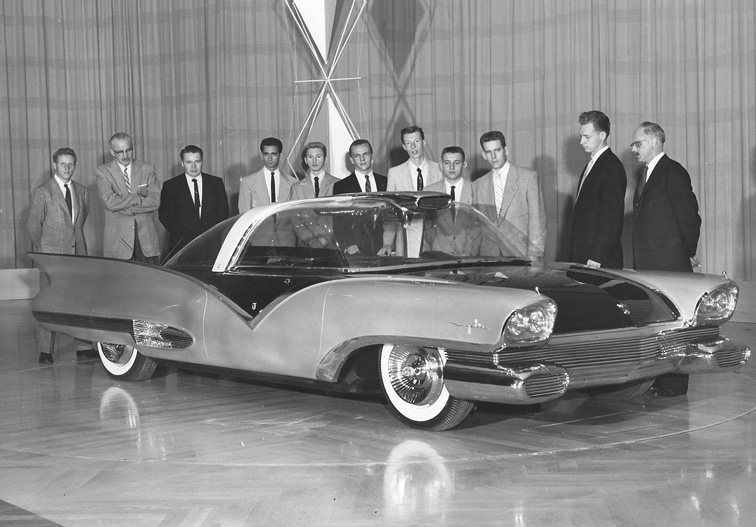 (Photo: Source unknown)
(Photo: Source unknown)
Neo: 1955 Ford Mystere Concept Car
OK, that's it for another month. Just one show in June; the regular Model Fair at Granville on 8th June. In case you're unaware, the Diecast Model Expo will be returning to Sydney this year, to be held on the weekend of 10-11th November. The venue is very centrally located at the Rydges Hotel, Rosehill (near Parramatta) and I will be a room trader during the Expo. Should be a great event. Until next month, happy collecting.
Formula One
- 1980 Ferrari 312 T5, G.Villeneuve (2) Imola GP Accident scene (Brumm)
- 2017 Haas Ferrari VF17, K.Magnussen (20) Spanish GP (Minichamps)
- 1962 Porsche 804, D.Gurney (8) (RBA)
- 2014 Red Bull Renault RB10, D.Ricciardo (3) 1st win Canadian GP (Spark)
- 2002 Toyota TF102, M.Salo (24) "Panasonic" (Minichamps)
- 2003 Toyota TF103, C.Da Matta (21) "Panasonic" (Minichamps)
American Race Series
- 1962 Lotus 19, I.Ireland (6) 1st Nassau (Spark)
- 1968 McLaren M6B, L.Motschenbacher (11) Riverside (Spark)
- 1966 Ford GT40 Mk2, McLaren/Amon (96) 24hr Daytona (IXO)
- 1965 Shelby Daytona Coupe, Bondurant/Schlesser (15) 4th Sebring 12hr (TSM)
- 1966 Shelby Daytona Coupe, Schlesser/Heck/Johnson, class winner Daytona 24hr (TSM)
Le Mans / Porsche Cup / Rally
- 2003 Abarth 700 Spyder, Vinatier/Zeccoli (49) Le Mans (Spark)
- 1968 Abarth 1000 SP, Plain body race car in Light blue (Spark)
- 1968 Alfa Romeo T33/2, Giunt/Galli (186) 1st class/2nd overall Targa Florio (Spark)
- 1981 BMW M1, Alliot/Darniche/Cecotto (51) 16th Le Mans "VSD" (Spark)
- 1988 BMW M3 E30, A.Heger (2) "Hilton" Macau Guia winner (Spark)
- 1968 Ford Escort Mk1 TC, F.Gardner (16) Brands Hatch (Trofue)
- 1967 Ford GT40 Mk1, M.Salmon/B.Redman (62) Le Mans (Spark)
- 1968 Ford P68, F.Gardner/Attwood (7) Nurburgring (Minichamps)
- 2013 HPD ARX 03B Honda, Briscoe/Franchitti/Tucker (33) Le Mans DNF (Spark)
- 1950 Jaguar XK120, Johnson/Hadley (17) Le Mans DNF (Spark)
- 1983 Lancia LC1, Sigala/Larrauri/Cohen Olivar (51) Le Mans (Spark)
- 1967 Porsche 911S, Cahier/Killy (46) 7th (class winner) Targa Florio (Spark)
- 1969 Porsche 908/02 Spyder, G.Mitter/U.Schutz (266) 1st Targa Florio (Spark)
- 1994 Porsche 911, J.P.Jarier (19) Porsche Supercup (Minichamps)
- 1994 Porsche 911, L.Bryner (10) Porsche Supercup (Minichamps)
- 2002 Porsche 911 GT3 RS, Alphand/Lavieille/Thevenin (72) Le Mans (Minichamps)
- 2008 Porsche 911(997) GT3 RSR, A.Davison/Henzler/Felbermayr (77) 27th Le Mans (Spark)
- 2015 Porsche 911 (991) GT3 Cup, C.Baird (12) Carrera Cup Asia (Spark)
- 2015 Porsche 919 Hybrid, Webber/Hartley/Bernhard (17) 2nd Le Mans (Spark)
- 1992 Toyota TS010, Lees/Brabham/Katayama (7) Le Mans (HPI)
- 1965 Porsche 904, Bohringer/Wutherich (150) 2nd Monte Carlo Rally (Spark)
- 1965 Porsche 911 T, Linge/Falk (147) 5th Monte Carlo Rally (Spark)
- 1979 Porsche 924 GTS, J.Barth/R.Kussmaul (40) Monte Carlo Rally (Spark)
Road Cars
- 1962 Alfa Romeo 2600 Berlina in cobolt blue (Kess)
- 1961 Aston Martin DB4 S4 in metallic light brown (Spark)
- 1961 Aston Martin DB4 GT Bertone Jet in metallic grey (Neo)
- 1929 Bentley 4-1/2 Litre in red (Neo)
- 1957 Buick Roadmaster Hardtop in metallic brown/white (Neo)
- 1958 Buick Century Caballero in red/white (Neo)
- 1955 Ford Mystere in metallic purple/black (Neo)
- 1937 Lincoln Zephyr Coupe in dark red (Neo)
- 1965 Maserati Sebring Series II in metallic blue (Neo)
- 1936 Mercedes Typ 290 Roadster (W18) in white (Neo)
- 1949 Oldsmobile Rocket 88 in black (Neo)
- 1941 Packard 110 Deluxe Wagon in dark red/wood panels (Neo)
- 1960 Plymouth Fury Convertible in metallic turquoise/white (Neo)
- 1956 Studebaker President in black/white (Neo)
After Thoughts: What a memorable day of motorsport we had on 27th May; congratulations to Will Power for being the first Australian to win the Indy 500 and Dan Ricciardo for scoring his first Monaco GP win. Now in his 11th season in the Indy Cars series, Will Power remains largely unknown and unheralded in Australia despite his 32 race wins and an Indy Series championship in 2014; perhaps this will now change?
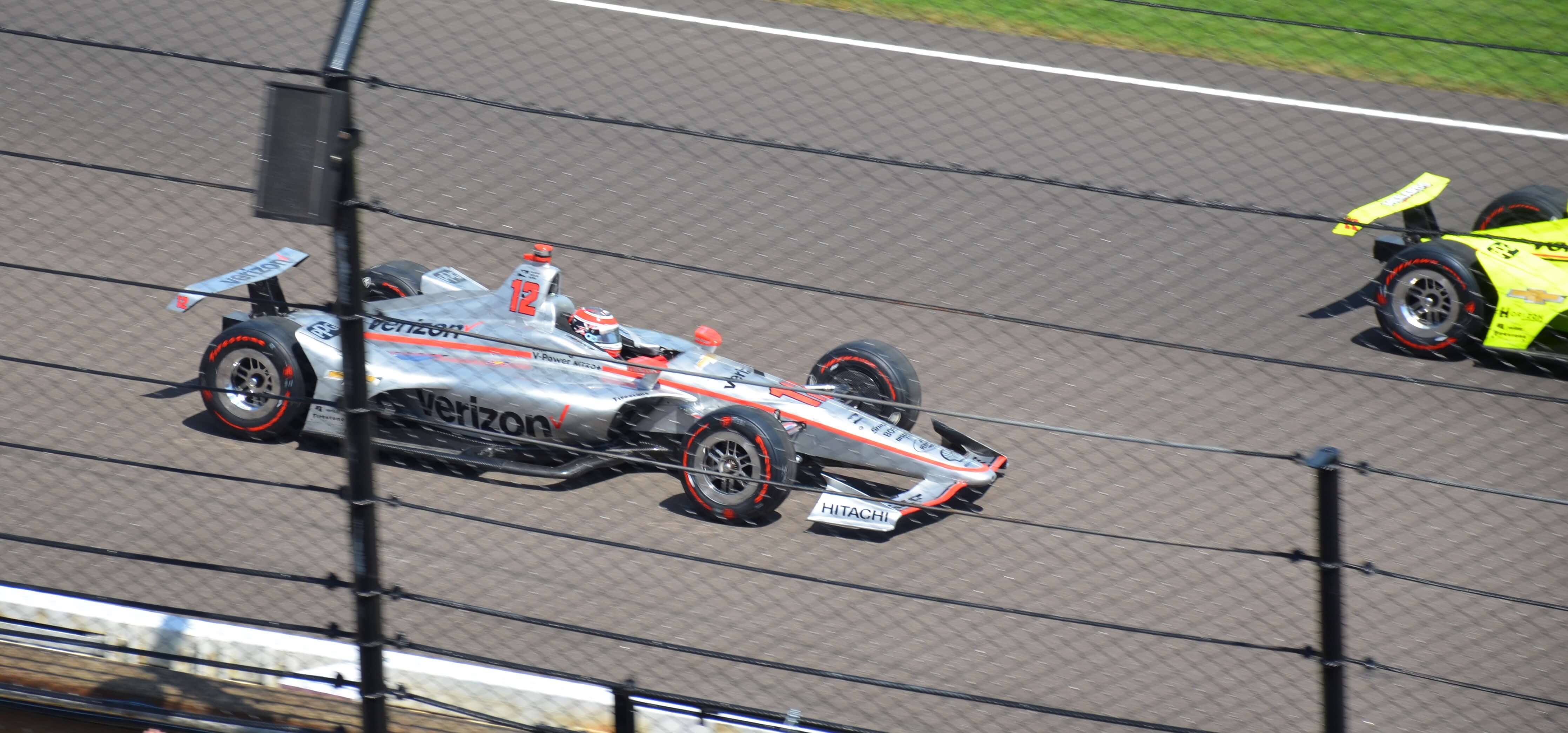 2018 Indy 500 Will Power (Photo: DoctorIndy)
2018 Indy 500 Will Power (Photo: DoctorIndy)
To a large extent the winners and losers of the prestigious Monaco GP are determined in qualifying and Dan Ricciardo stamped his authority with a qualifying lap record of 1 min 10.810 seconds; the first ever driver to go under 1 min 11 seconds. Despite losing 25% of his power in his Red Bull early in the race, Ricciardo was able to manage the problem and keep his lead to the chequered flag.
When the first Grand Prix de Monaco was held in 1929 the cars were big and heavy; the race took nearly four hours to complete and the average speed was 80 kph. In these early days, the drivers were obliged to practice at dawn because the circuit ran through the main streets of the town and the shopkeepers refused to be closed off during business hours. A lot has changed since then.
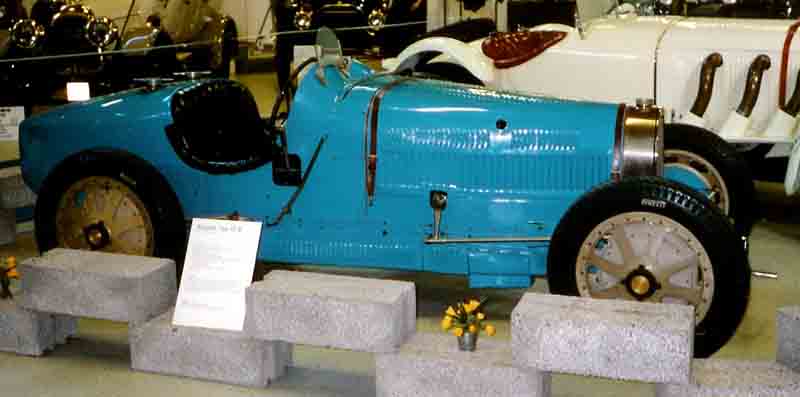 A Bugatti Type 35B won the 1929 Monaco GP (Photo: L-G Lindgren)
A Bugatti Type 35B won the 1929 Monaco GP (Photo: L-G Lindgren)
 Early Circuit Layout Monaco GP (By Mario 30095)
Early Circuit Layout Monaco GP (By Mario 30095)
In 1950 the Monaco GP was included in the new Formula One World Driver's Championship. The circuit, with its many elevation changes, tight corners and narrow course made it the most challenging race in the F1 calender. The circuit is also unique in having been held on the same layout since its inception with only the addition of the swimming pool chicane in 1973. Also, the addition of a few armco barriers helped improve safety especially in preventing cars from diving into the harbour. Two drivers have the distinction of ending up in the Mediterranean; Alberto Ascari driving a Lancia in 1955 and Paul Hawkins in 1965 driving a Lotus-Climax.. Due to the tight and twisty nature of the layout, it favours the skill of the drivers over the power of the cars but it is notorious for the lack of overtaking opportunities. Ayrton Senna is the undisputed master of Monaco having won the race five times in a row and winning six in total.
Reve Collection: Lotus 99T Senna's 1st of 6 Monaco wins
Some interesting facts of the Monaco GP:
- Drivers make around 3600 gear changes during the race.
- Olivier Panis' win from starting 14th remains the furthest back from which the GP has been won.
- Only 3 cars finished the 1996 Monaco GP, the lowest number in F1 history.
- McLaren have won the most races at Monaco, 15 in all.
- Jim Clark took pole position 4 times but never won the race.
- Monaco has the slowest corner of all current tracks; about 50kph at the turn 6 hairpin.
- Monaco is one of 4 tracks on the original 1950 calendar that's still on the calendar today.
- The average race speed has doubled from 80kph in 1929 to about 160kph today.
The Monaco Grand Prix is widely considered to be one of the most prestigious automotive races in the world alongside the Indianapolis 500 and the 24 Hours of Le Mans. These three races are considered to form the Triple Crown of world motor races and Graham Hill is the only driver to date, to win all three races. Notoriously difficult to overtake, the racing at Monaco can be quite processional, nevertheless, it is a race all drivers aspire to win.
New Additions: May 2018
Hello and welcome to the May update. A number of new models have arrived during the month, including some recent F1 cars from Minichamps. I also managed to secure some interesting Mazda road cars from French model maker, Norev and some early release models from Spark's sister company, Bizarre. So what are my picks for this month ... F1 world champions is a popular collecting theme and Keke Rosberg's 1982 Williams FW08 should find a home in many collections. The 1982 season was a tragic one with two drivers being killed (Gilles Villeneuve and Riccardo Paletti) and a career-ending accident suffered by Didier Pironi. Rosberg only managed to win one GP all season (the Swiss GP) but his consistency (5 podium finishes) earned him the championship which would be the last for a naturally-aspirated car until turbo-charged engines were banned for 1989. This Minichamps model is part of their World Champions collection.
Minichamps: Williams Ford FW08 Keke Rosberg
On 7 February 2016, the annual Bathurst 12 hour race for GT cars was held around the 6.2 kilometre Mount Panorama circuit. The race was also the first race (of three) in the 2016 Intercontinental GT Challenge series. 36 cars started the race and the Germany based Phoenix Racing team entered their Audi R8 LMS for Laurens Vanthoor, Alex Davison and Markus Winklehock. Their Audi finished in 4th position, the last car on the lead lap. Spark has released this Audi and have superbly reproduced it's distinctive indigenous "Terra Australis" livery.
Spark: Audi R8 LMS Bathurst 12 hour 2016
Last year was the fiftieth anniversary of the release of Mazda's first rotary powered car, the Cosmo Sport L10. Only 1500 of these were produced by Mazda and French model maker, Norev have faithfully reproduced this significant car in 1:43 scale.
Well, that's it for another month. There will be 2 model fairs this month; the first is the Collectormania Toy and Hobby Fair at Penrith on May 6th and then the regular Sydney Model Auto Club Fair on May 11 at Granville. I hope to see you there. Happy collecting.
Formula One
- 1992 Benetton Ford B192, M.Schumacher (19) 1st win Belgium GP (Minichamps)
- 2009 Brawn Mercedes BGP001, J.Button (22) (Minichamps World Champions Collection)
- 1963 Lotus Climax 25, J.Clark (4) World champion [Blister pack] (Altaya)
- 1968 Matra MS10, J.Stewart (6) 1st German GP (Spark)
- 2016 Mercedes AMG W07, N.Rosberg (6) 1st Australian GP (Minichamps)
- 2016 Red Bull Tag Heuer RB12, D.Ricciardo (3) Monaco GP 1st Pole (Minichamps)
- 2017 Red Bull TAG Heuer RB13, D.Ricciardo (3) 1st Azerbaijan GP (Minichamps)
- 2017 Renault R.S.17, R.Kubica (46) Hungaroring Test (Minichamps)
- 1957 Vanwall VW57, S.Moss (8) [Blister pack] (Altaya)
- 1982 Williams Ford FW08, K.Rosberg (6) World Champions Collection (Minichamps)
- 2016 Williams Mercedes FW38, F.Massa (19) "Almost" Last Race Brazilian GP (Minichamps)
American Racing
- 1976 Chevrolet Monza, Al Holbert (14) 1st Road Atlanta (Spark)
- 1970 Dodge Challenger, S.Posey (77) Trans AM (Spark)
- 1955 Jaguar D-type, Hawthorn/Walters (19) 1st 12h of Sebring (Spark)
ATCC / Bathurst 12 hour
- 1985 BMW 635 CSi, Cecotto/Ravaglia (21) Bathurst "Bob Jane T-Marts" (Spark)
- 2016 Audi R8 LMS Ultra, Davison/Vanthoor/Winkelhock (2) Bathurst 12hr (Spark)
Le Mans / Porsche Cup / Rally
- 1955 Bristol 450C, Wilson/Mayers (34) 7th Le Mans (Bizarre)
- 1952 Fraser Nash 'Mille Miglia", Wilson/Stoop (41) DNF Le Mans (Bizarre)
- 1992 Porsche 911, E.Walcher (42) Porsche Cup "Porsche Italia" (Minichamps)
- 1965 Sunbeam Tiger, A.Cowan/R.Turvey (103) 11th Monte Carlo (Spark)
Land Speed Record
- 1954 Panhard Riffard Record Car, Montlhery 201.88kph (car #128) (Bizarre)
Road Cars
- 1982 Ford Sierra Mk1 Ghia in metallic grey (Neo)
- 1962 Mazda Carol 360 in white/light blue (Norev)
- 1968 Mazda Cosmo Sport L10B in white (Norev)
- 1969 Mazda Luce Rotary Coupe in white/black (Norev)
- 1972 Madza RX-3 Savanna Coupe in dark green (Norev)
- 2017 Porsche 911 (991 II) GT3 in graphite blue metallic (Minichamps)
After Thoughts: An Indy Retrospective. For fans of American open-wheeler racing, the month of May can only mean one thing, The Indy 500. Unfortunately, the current grid of Indy cars is made up of an homogenized field of 33 identical Dallara cars powered with either a Chevrolet or Honda engine and all using the same universal aero kit. Last year the teams were at least able to use Chevrolet or Honda aero kits depending on the engine behind the driver.
Spark: Chevrolet Camaro 1967 Indy 500 Pace Car
But looking back to 1967 and we see an entirely different grid; one with a diverse field of 14 different chassis and 4 engine manufacturers. That year the most common chassis were the Eagle and the Gerhardt (7 entries each), then with Lola and Lotus having 3 cars each for drivers such as Jim Clark and Graham Hill (Lotus), Al Unser and Jackie Stewart (Lola). Eagle drivers included Denny Hulme, Dan Gurney. Jochen Rindt and Johnny Rutherford while the Gerhardts were driven by Gordon Johncock, rookie Art Pollard and others. One of the two Coyote cars in the field was driven by A.J. Foyt who qualified 4th but became the eventual winner of the 1967 classic.
Spark: Coyote Ford 1967 Indy winner, AJ Foyt
Without a doubt, the most controversial chassis had to be the car entered by the Granatelli brothers that nearly changed the face of Indy car racing forever. The brothers were always innovative and they caused a sensation when they unveiled their STP Paxton Turbocar to be raced by Parnelli Jones. The car featured an aluminium box-shaped frame that went down the middle of the chassis, Hanging on one side was the cockpit and on the other side was a Pratt-Whitney ST6 turbine engine normally used to power helicopters. The car also used a 4-wheel drive system and a moveable spoiler to serve as an air brake. But it was the sound of the turbine that really made it stand out from the others; the STP Turbocar sounded like a vacuum cleaner. Even before arriving at Indianapolis, some teams tried to get the car banned but for the time being, USAC the governing body allowed the car to race. Jones qualified the car in 6th place in "race" trim while his competitors added nitro to their qualifying fuel giving them a power boost. Nitro, however is hard on engines and adversely affects race mileage so was impractical for actual racing. So for the first 18 laps, the STP car took off and led the race convincingly and with just 4 laps remaining, it looked like Parnelli Jones would take another Indy 500 victory. But then ... the car slowed dramatically and coasted into the pits with transmission failure; the culprit being a $6 bearing. Amidst a chorus of complaints from other teams not wanting to convert to turbine power to remain competitive, the following year USAC decided to reduce the power output of turbine engines which made the STP Turbocar obsolete.
Spark: STP Paxcton Turbocar, 1967 Indy 500
The 1967 race was also made memorable due to it being red-flagged for rain on lap 19 and the organisers were forced to postpone the race until the following day. For the first time in Indy 500 history, the race would take two days to run. Shortly after the restart of race the next day, Graham Hill, the 1966 winner retired his Lotus on lap 23 and shortly afterwards his team mate, the 1965 winner Jim Clark also retired. The 1967 race is also noteworthy for being the first race where all the cars were rear-engined; consigning the front-engined roadsters to history.
Spark: Lotus Ford, Jim Clark 1967 Indy 500
Footnote: Two weeks after his win at the Indy 500, A.J. Foyt teamed up with Dan Gurney to win the Le Mans 24 hour race in a GT40. One week later, Gurney would make history by winning the Belgium GP in his own Eagle-Weslake car. Denny Hulme finished 4th in this, his first Indy 500 race, taking the best placed Rookie award and later that year would win the F1 World Drivers Championship in a Brabham-Repco. The 1967 Indy 500 would turn out to be Jim Clark's final race at the Brickyard as he was tragically killed the following year.
New Additions: April 2018
Welcome to the April update and I must thank everyone who dropped by my stand at the Collectormania Fair last month. It was a hot day but thankfully the air conditioning made it a comfortable day out. The F1 season has started and it doesn't seem much has changed with Mercedes and Ferrari clearly the class teams again. The Chinese New Year hiatus is over and a lot of new models have been released to satisfy our collecting addiction, so what are my highlights this month? Firstly, F1; everyone knows that Lewis Hamilton won the Drivers World Championship last year and Minichamps have released a plethora of his 2017 cars to commemorate his success. One car is the Chinese GP winning car, this was his first of 9 wins scored during the season which netted him a total of 363 points.
Minichamps: Mercedes W08 2017 Hamilton Chinese GP
Le Mans winning cars is a popular collecting theme and Spark recently released the 2017 winning Porsche 919 Hybrid (car #2) driven by Hartley, Bernhard and Bamber. The two Porsche cars had been out-qualified by two of the three Toyota LMP1 cars and the Japanese team led the race for ten hours until the #7 Toyota suffered terminal clutch failure. The lead was then taken over by the #1 Porsche car, which held the lead until 4 hours remaining in the race when it too had to retire. The #2 Porsche had earlier been delayed by a lengthy pit stop to repair its front axle and had lost touch with the leaders so the race lead was held by an Oreca 07 LMP2 car. In a thrilling finish, the #2 Porsche relentlessly chased down the Oreca and finally overtook the LMP2 car with two hours left of the race. This would be the last time the Porsche 919 would race at Le Mans so a fitting end to a brief come-back. Spark seem to be the only manufacturer releasing LM winning cars at the moment; the other long time manufacturer, IXO haven't released any for a while now although they are now re-producing some of their earlier releases.
Spark: Porsche 919H 2017 Le Mans winner
OK, its a wrap for another month. Just one model fair in April; the regular Friday night event run by the Sydney Model Auto Club on 13 April at Granville. Hope to see you there. Until next month, happy collecting.
Formula One
- 1994 Benetton Ford B194 J.Verstappen (6) 3rd Belgian GP (Spark)
- 1963 Brabham Climax BT7, J.Brabham (6) 4th French GP (Spark)
- 1964 Brabham Climax BT7, J.Brabham (5) Monaco GP (Spark)
- 1965 Matra Ford MS1, J.Stewart (25) F3 Goodwood Test (Spark)
- 2017 Mercedes AMG W08, L.Hamilton (44) 1st Chinese GP (Minichamps)
American Racing
- 2003 Porsche 911 GT3 RS Stanbridge/Steranka/v.Overbeek (83) 24h Daytona (Minichamps)
Le Mans
- 1966 Ford GT40 Mk ll Andretti/Bianchi (6) Le Mans (Spark)
- 1962 Porsche 695 GS LM Pon/Godin de Beaufort (30) Le Mans (Spark)
- 1983 Porsche 956, V.Schuppan/Holbert/Haywood (3) Le Mans winner (Spark)
- 2013 Porsche 911 GT3 Cup S.Ogier (16) Monaco Supercup (Spark)
- 2017 Porsche 919H T.Bernhard/B.Hartley/E.Bamber (2) 1st Le Mans (Spark)
Road Cars
- 1992 Ford Escort RS Cosworth in red (Maxichamps)
After Thoughts: 50 years ago, Ford Europe revealed one of their most iconic small car to the public at the Brussels Motor Show in January 1968, the Escort Mk 1. Slated as the replacement for the long-running and successful Anglia, the Escort was far from being a sophisticated luxury small car; it was cheap and spartan and it could not be described as cutting edge in any way. However, it was fun to drive; despite it's modest power the lightweight body shell gave the Escort a decent power-to-weight ratio. More importantly the Escort looked "cool" with its sporty dog-bone grille, its muscular proportioned body and the modern looking dash board gave the car instant street cred. With the option to upgrade the engine to a Lotus twin-cam or a Cosworth BDA RS1600 or a Pinto-powered RS2000, the Escort became the consummate race car. The Mk 1's production life ran from 1968 to 1975 and was a commercial success in the UK as well as parts of western europe. The Escort was built mainly in the UK but also in Germany, Australia and New Zealand.
Ford Escort Mk1 1100 1972 (Author: Charles01)
A higher performance version of the Mk 1 was produced for motor racing called the Escort Twin Cam. It had a 1.6L engine with a Lotus-made eight-valve twin camshaft head and with 150 horsepower was specifically produced for Group 2 International rallying. The Escort TC went on to become a successful rally car, with the Ford works rally team becoming almost unbeatable in the late 60's and early 70's; winning the Rally World Championship for Makes in 1968 and 1969. By 1970 the Escort was struggling against the likes of Porsche and Renault and Ford badly needed a publicity boost for its rally car. That year, the first of two "World Cup" rallies was held, these were intercontinental rallies to celebrate upcoming FIFA World Cup Football events and the rally in 1970 was from London to host nation Mexico. Ford Escorts finished 1st, 3rd, 5th, 6th and 8th. This gave rise to the Escort Mexico special edition road version in honour of the rally win and over 10,000 were produced.
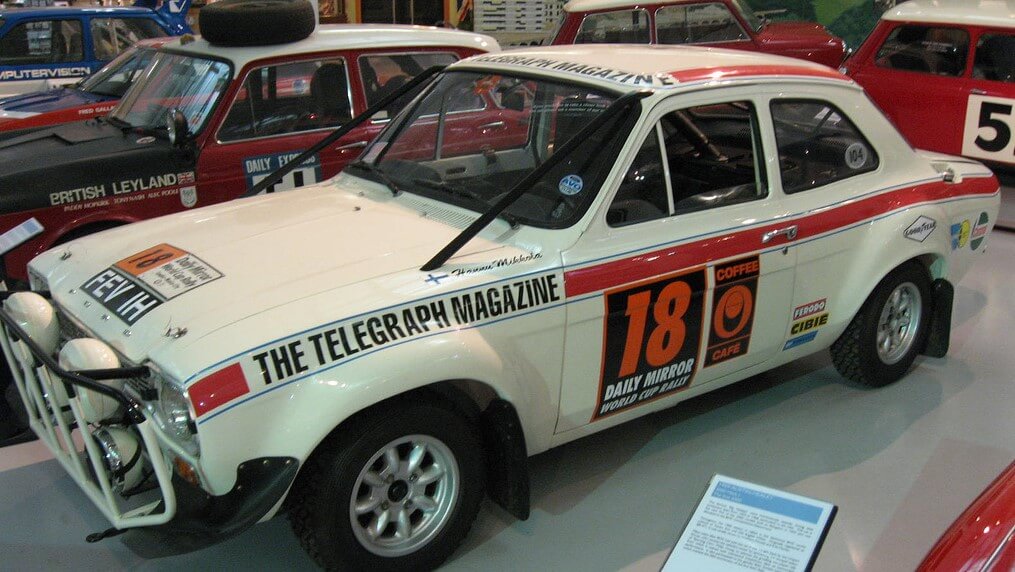 Winner London to Mexico Rally 1970 (Author: Paulb4uk)
Winner London to Mexico Rally 1970 (Author: Paulb4uk)
The Escort Mk 1 TC's were also dominant in road racing as well. Alan Mann Racing, a Ford factory team since 1964 with its distinctive red and gold livery raced the Escort TC in the British Saloon Car Championship in 1968 and 69 with Australian driver Frank Gardner. Gardner won the 1968 Championship comfortably in the Escort and was 3rd in 1969.
Altaya: Ford Escort Mk1 TC Frank Gardner BTCC 1968
In 1975 the Mark 1 Escort was replaced by the Mark 2 which was developed jointly between the UK and Ford of Germany. The third generation of the Escort appeared in 1980 and the fourth generation in 1986. The fifth iteration, the Mark V was released in 1990 and the 6th and final generation was made available in 1995; the final version finished production in Argentina in 2004. In 1998 Ford announced an all-new car, the Focus to replace the Escort and the Escort name, in use for thirty years was retired. The Escort will forever be remembered as a simple car executed in a very special way.
Maxichamps: 1992 Ford Escort RS Cosworth
New Additions: March 2018
Wow, another month has gone by and we're now into autumn, but looking on the positive side, the F1 season is just about to kick off in Melbourne in a few days time. So welcome to my March update, again apologies for the lateness of this update and this time I'm blaming February for being such a short month. OK, let's get to my monthly highlights ... first up is the very distinctive and unique Ferrari 250 GT "Drogo" that raced at Le Mans in 1962. Dubbed the "breadvan" by the motoring press, its history is rather an interesting one being a one-off car made from a 1961 Ferrari 250 GT SWB to compete against the 1962 Ferrari 250 GTO's at Le Mans and other sports car races. In 1962 the owner of Scuderia Serenissima, Count Giovanni Volpi hired engineer Giotti Bizzarini to upgrade the 250 GT to race against the newer GTO's after Enzo Ferrari refused to sell any new GTO's to Volpi. Volpi's crime was poaching staff from Ferrari to the ATS F1 team. Bizzarini, with help from coach builder Piero Drogo developed an aerodynamic advanced body with the roof line dramatically extended to the rear end. The engine and radiator were also moved further back and the resulting car was lighter than the GTO's. The Breadvan made its competition debut at the 1962 Le Mans 24 hour where it quickly passed all the Ferrari GTO's and was 7th overall at the 4 hour mark when a driveshaft failure caused its retirement. The effectiveness of the design was proven when it won two races in the GT class later in the year. However the car's racing life did not extend much beyond 1962.
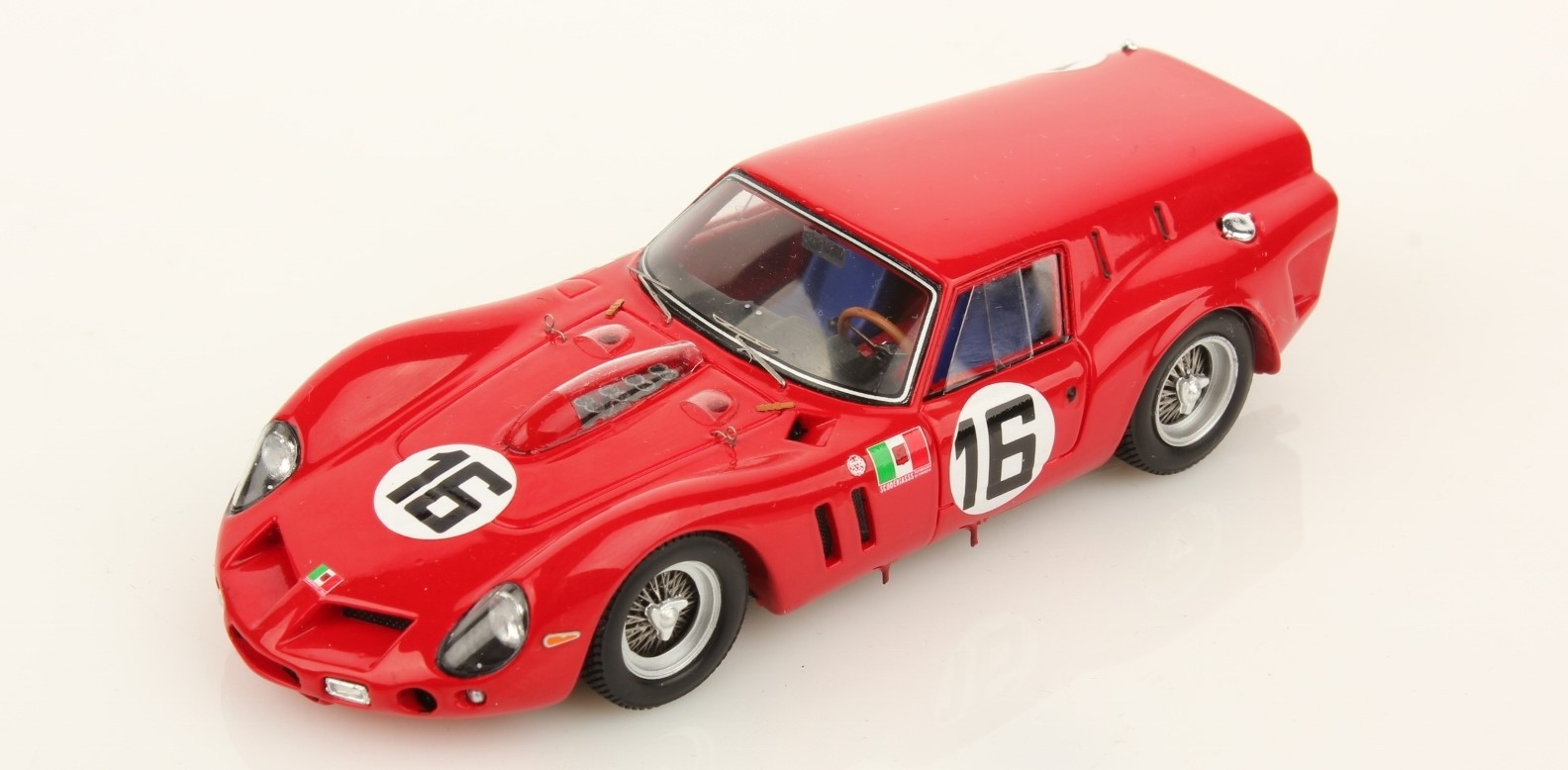 Looksmart: 1962 Ferrari 250 GT Drogo Breadvan
Looksmart: 1962 Ferrari 250 GT Drogo Breadvan
The second car I'd like to highlight is the Manthey Racing Porsche 911 GT3 R that raced at the Nurburgring 24 hour race in 2017. Manthey Racing is a renowned Porsche racing team founded by Olaf Manthey in 1996 and Porsche AG owns 51% of the Nurburging based company. Although its 2017 Nurburgring 24 hour campaign ended in retirement after 4 hours, they have 5 overall wins in the past, as well as two class wins at Le Mans and eight Porsche Cup titles. This year, Manthey Racing entered a bright day-glow green Porsche 911 GT3 R (similair livery as the Nurburgring car) in the Bathurst 12 hour GT race and was in the leading group going into the final hour and ready to challenge for victory until the race ended under a red flag stranding the car in sixth place.
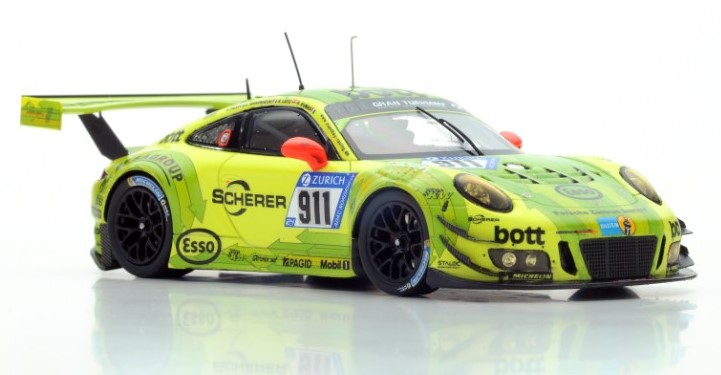 Spark: Manthey Racing Porsche 2017 Nurburgring
Spark: Manthey Racing Porsche 2017 Nurburgring
Manthey Racing Porsche: 2018 Bathurst 12hr GT
OK, that's it for another month. Just a reminder the monthly model fair at Granville in on 9th March and the Collectormania Fair at Penrith is on 18th March, hope to see you there. And the first 2018 F1 race is on 25th March. Happy collecting.
Formula One
- 1962 Cooper Climax T60, B.McLaren (14) 1st Monaco GP (Spark)
- 1964 Ferrari 156, L.Bandini (8) 1st Austrian GP (Looksmart)
- 1992 McLaren Honda MP4/7, G.Berger (2) race car Ed.43 No.10 (Minichamps)
- 1997 McLaren Merc MP4/12, M.Hakkinen (9) race car Ed.43 No.16 (Minichamps)
- 1998 McLaren Merc MP4/13, M.Hakkinen (8) race car Ed.43 No.25 (Minichamps)
- 2002 McLaren Merc MP4/16, J.Alesi Test car - Paul Ricard Ed.43 No.47 (Minichamps)
- 1976 Surtees Ford TS19, H.Pescarolo (38) French GP (Spark)
American Racing
- 2001 Porsche 911 GT3 RS, Baron/Hindery/Buitoni/Petty (43) Daytona 24 hr (Minichamps)
- 2001 Porsche 911 GT3 RS, Jeannette/Bartkiw/Minkin (76) Daytona Grand Am (Minichamps)
- 2001 Porsche 911 GT3 R, Luhr/Fitzgerald/Pobst/Menzel (31) Daytona 24h 1st GT (Minichamps)
- 2003 Gunnar Porsche G99, Petty/Baron/Lewis (6) Paul Revere Grand Am (Minichamps)
Le Mans / Porsche Cup / Targa Florio / Rally
- 1962 Ferrari 250 GT SWB Drogo, Abate/Davis (16) Le Mans Drogo "Breadvan" (Looksmart)
- 1966 Ford GT40 Mk ll, P.Hawkins/M.Donohue (4) DNF Le Mans (Spark)
- 1952 Lancia Aurelia B20, F.Bonetto (34) 1st Targa Florio (Spark)
- 2013 McLaren MP4-12C, Leclerc/Parisy/Soucek (11) 24 hr Spa (Spark)
- 2014 McLaren MP4-12C, Estre/Kox/Mullen/Bert (66) 24 hr Nurburgring (Spark)
- 1967 Porsche 906 Carrera, Shintarou Taki (6) 5th Japan GP (Spark Kid Box Ed.)
- 1967 Porsche 906 Carrera, Tetsu Ikuzawa (8) 1st Japan GP (Spark Kid Box Ed.)
- 1969 Porsche 908/02 Spyder, G.Mitter/U.Schutz (266) 1st Targa Florio (Spark)
- 1993 Porsche 911 Carrera, W.Land (8) Porsche Supercup (Minichamps)
- 1994 Porsche 911 Cup 3.8, D.Dupuy (17) Porsche Supercup (Minichamps)
- 2004 Porsche 911 GT3 Cup, W.Henzler (3) Carrera Cup (Minichamps)
- 2014 Porsche 997 GT3 RSR, Maris/Merlin/Helary (67) Le Mans (Minichamps)
- 2017 Porsche 911 GT3 R, Dumas/Makowiecki/Pilet/Lietz (911) Nurburgring 24h (Spark)
- 2015 Porsche 911 GT3 RGT, R.Dumas/Giraudet (25) Ypres Rally "Spark Racing" (Spark)
Land Speed Record
- 1935 Bluebird, M.Campbell Daytona Beach LSR 445.49 kph (Bizarre)
Road Cars
- 1967 Ford P7A 17m in light blue (Neo)
- 1953 Studebaker Champion in cream with red roof (Spark)
After Thoughts: The world of motorsport recently lost another legend when Daniel Sexton Gurney passed away on January 14th 2018 at the age of 86. He was a world-class racer, innovator and team owner who survived and excelled in motorsport's most deadly era. Gurney started racing hotrods in California where he eventually attracted the attention of Luigi Chinetti who started his international career by putting him in a Ferrari 250 TR at Le Mans in 1958. This in turn caught the attention of Enzo Ferrari who was so impressed with his test performance in a Ferrari Dino 246, that he entered him in 4 Grand Prix in 1959. For the record, Gurney finished second, third and fourth in his second, third and fourth race with Ferrari. But Gurney wasn't happy with the politics and the management style at Ferrari and he signed up with BRM in 1960 where he encountered only unreliability, frustration and tragedy. At the Dutch GP his BRM P48 suffered a brake failure and in the ensuing crash, he broke his arm but tragically a young spectator was killed. In 1961 Gurney joined the fledgling factory Porsche team and scored three 2nd place finishes to end up 4th in the championship; in the following year he scored his and Porsche's maiden win at the French GP. When Porsche pulled out of F1 at the end of 1962, Jack Brabham hired the gun driver for his own fledgling team in 1963 and it was Gurney who scored the team's first win at the French GP in 1964.
Spark: Brabham BT24 Dan Gurney 1968
In 1962 Gurney and Carol Shelby began plans to build an American race car to compete at the Indy 500 and in F1 with the backing of Goodyear who suggested the team name of "All American Racers". The F1 team however, was called "Anglo American Racers" due to the use of British engines (Climax and later Weslake) and the American designed cars were called Eagles. The AAR Eagle Climax T1F made it's debut in 1966 and in 1967 Gurney scored the team's maiden win at Spa with the Eagle Weslake T1G. By the end of 1968 the money had run out and the team withdrew from F1 and Gurney returned to the States to concentrate on the more successful Indycar program.
Minichamps: Maserati T61 Dan Gurney 1960
1967 was arguably Gurney's most successful and satisfying year; not only did he win a GP in a car of his own construction, he also won the Le Mans 24 hour race in a Ford GT40 with A.J. Foyt where he spontaneously began the now familiar tradition of spraying champagne in celebration (by spraying Henry Ford II on the podium). While still competing in F1, Gurney found the time to race in every Indy 500 from 1962 to 1970 with a best place finish of 2nd (twice). He also found time to race in the NASCAR series and also three starts at the Daytona 500. After his retirement from F1 Gurney devoted himself full-time managing the AAR team which won many races including the Indy 500, the 12 hours of Sebring and the 24 hours of Daytona.
Spark: Ford Galaxie Daytona 500 1963
Gurney's motorsport achievements include introducing full-face helmets to open-wheeler racing wearing one in the 1968 German GP. He also invented what is known as the "Gurney flap", a small lip to add to wings which multiplied the downforce they provided with minimal additional drag. His innovative thinking would also lead to the 1980 "Boundary Layer Adhesion Technology" (BLAT) Eagle Chevrolet which immediately put naturally-aspirated cars on par with its turbo powered rivals (see February update). Dan Gurney's great legacy will be remembered for as long as cars are raced.
New Additions: February 2018
My apologies for the lateness of this update. My excuse is that I've just spent the first weekend of February at Bathurst, watching the 12 hour GT race. What a great race which was unfortunately was robbed of an exciting finish by a late crash.
Close racing across the mountain
MARC II V8 Car #91 1st Invitational Class
Anyway, back to the job at hand. This month, the highlights include the 1981 Chevrolet powered Gurney Eagle Challenger made by the American model maker, Automodello. This company specialises in models that have never or rarely been modelled before and are released in very limited quantities, from 50 up to 999 so they tend to more expensive than mass produced models. The Eagle Challenger is one of these low release models and is an interesting subject best described by Automodello themselves; "In 1980 AAR introduced a version of its Eagle Indy Car with the truly innovative "Boundary Layer Adhesion Technology (BLAT) ...which referred to the novel system of generating aerodynamic downforce. While conventional cars of the day relied on ground effects, the Eagle generated twin vortices under the rear bodywork to generate downforce, with the engine exhaust routed to further enhance efficiency (Variants of this technology have been used more recently in F1). The car looked like nothing else on the track." At the 1981 Indy 500, the Eagle driven by Mike Mosley qualified 2nd but retired early due to engine trouble. At the next race at Milwaukee's tight one mile oval, Mosley finished more than a lap out in front of his nearest competitor. While Mosely drove the car in oval races, Dan Gurney put Can Am driver Geoff Brabham into the car for the road races. Brabham qualified on pole at Riverside and was well in the lead when a cross-threaded wheel nut at his first pitstop ended his race. The history of the AAR Eagle Challenger was to be a brief one as CART soon decided to outlaw the BLAT aero concept.
Automodello: AAR Eagle Challenger
The second model I'd like to focus on is the innovative and stylistic NSU Ro 80, a four-door front-engined sedan manufactured from 1967 until 1977. Noted for its aerodynamic styling and technologically advance powertrain, the NSU Ro 80 featured a 84 kW (113 BHP), 995 cc twin-rotor Wankel engine driving the front wheels. Over its ten year production run, over 37,000 units were made, all in a single generation. The Ro 80 remained relatively unchanged during its production run with just minor cosmetic changes to it bodywork. Unfortunately the car developed an early reputation for unreliability; the engine in particular suffered from high wear of its rotor tip seals allowing combustion products to escape. Although by 1970 most of the reliability issues had been resolved, damage to the car's reputation had undermined NSU's financial situation irreparably. NSU was acquired by Volkswagen in 1969 and merged with Auto Union to create the modern day Audi company.
Unfortunately, by the time you read this update, the only model fair this month at Granville will have already been held so let me remind you of the events scheduled for March. Apart from the regular fair at Granville on 9th March, there will also be the first Collectormania fair at Penrith on 18th March. Until next month, happy collecting.
Formula One
- 1986 AGS Motori Morderni JH21C, I.Capelli (31) Italian GP (Spark)
- 1975 Hill Ford GH1, V.Schuppan (22) Swedish GP (Spark)
- 1986 Ligier Renault JS27, R.Arnoux (25) 4th British GP (Spark)
- 1983 McLaren Ford MP4/1C, N.Lauda (8) 2nd Long Beach GP (Spark)
- 1959 Porsche 718 RSK, H.Blanchard (17) 7th USA GP (Spark)
- 2017 Red Bull Tag Heuer RB13, M.Verstappen (33) Australian GP (Minichamps)
American Race Series
- 1981 Eagle Challenger Chevrolet, M.Mosley (48) signed by D.Gurney (Automodello)
- 1981 Eagle Challenger Chevrolet, Geoff Brabham (48) signed by G.Brabham (Automodello)
- 1981 Eagle Challenger Cosworth, C.Mead (49) "White Castle" (Automodello)
Le Mans / Sportscar Racing
- 1966 Alpine Renault A210, M.Bianchi (6) 1st Macau GP (Spark)
- 1960 Ferrari TR60, Gendebien/Frere (11) Le Mans winner (IXO)
Road Cars
- 1976 Ferrari 512BB in red (IXO)
- 1938 Lancia Asturia IV Series in red (Starline)
- 1972 NSU Ro 80 in corona yellow (Maxichamps)
- 1965 Renault 16 in light metallic blue (Maxichamps)
- 2017 Porsche 911 R in white with green stripes (Spark)
After Thoughts: The 40th edition of the Dakar Rally has been run and won for another year. This year the car class was won by Carlos Sainz (Peugeot 3008 DKR Maxi) who also won the 2010 edition. Australian bike rider, Toby Price finished 3rd in his fourth start at the Dakar, unable to repeat his win in the 2016 event.
 Kamaz truck final stage 2004 Dakar (photo: Der Reisender)
Kamaz truck final stage 2004 Dakar (photo: Der Reisender)
The Dakar Rally is an annual rally raid (cross-country rally) that started in 1978 and was the brain-child of Frenchman Thierry Sabine who had raced in rallies in Africa. The idea of the Dakar arose when Sabine got lost in the Tenere Desert whilst competing in the Abidjan-Nice Rally and decided that the desert would be a good location for a regular rally. The first rally, known as the Paris-Dakar Rally started in Paris with 182 competitors in three classes (cars, bikes and trucks) leaving on Christmas Day to cover approximately 12,000 km to finish in Dakar, the capital of Senegal, some 20 days later. Most of the course was set in harsh conditions, including the uninhabitable Mauritanian desert and the Tenere desert, barren in all directions for hundreds of kilometres. Unsurprisingly only 74 vehicles survived that first rally. The rally quickly gained in popularity and by 1981, 291 vehicles took part and a year later, the number of entries had incresed to 382 vehicles. Encouraged by the 1983 car class winner Jacky Ickx, Porsche entered the following year with the 953 and won on their first attempt.
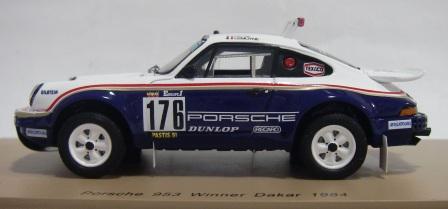 Spark: Porsche 953 1st Dakar Raly 1984
Spark: Porsche 953 1st Dakar Raly 1984
The 1987 rally marked the start of an era of increased official manufacturer participation in the car category with entries from the Peugeot factory. By the mid-2000's the Dakar Rally had reached the height of its popularity with a record 688 vehicles entered in 2005. However the 2008 event was cancelled amid fears of terrorist attacks in Mauritania, causing serious doubts about the future of the rally. Chile and Argentina then offered to host the event on the South American continent and the offer was accepted by the organising body. The 2009 event was the first to be held in South America with Volkswagen taking its first win as a works entry.
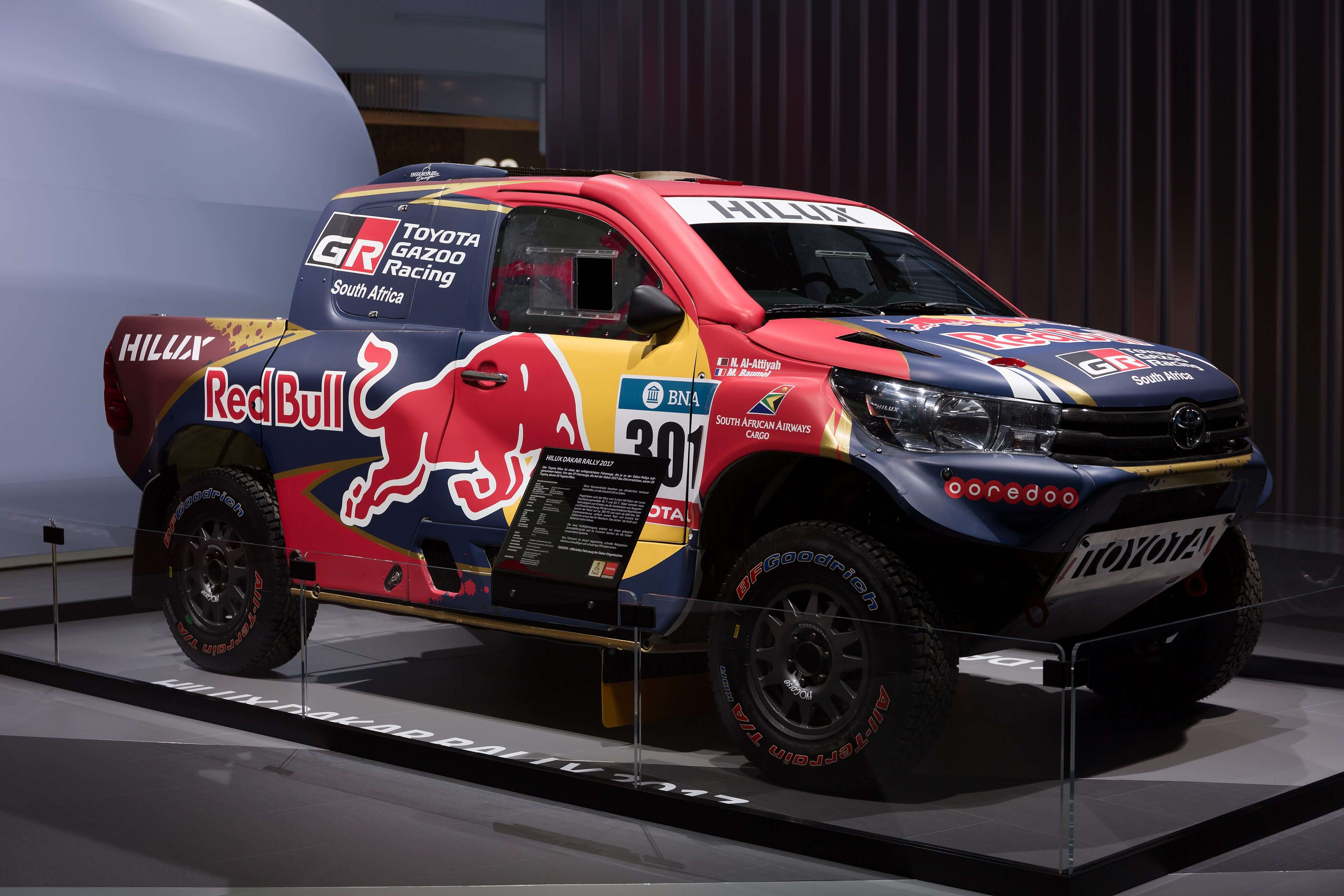 Toyota Hilux Dakar 2017 (photo: Matti Blume)
Toyota Hilux Dakar 2017 (photo: Matti Blume)
When the race was held in Africa, it was subject to criticism from several sources focusing on the race's impact on the inhabitants of the countries through which it passed. Residents saw limited benefits from the race with little money spent on local goods and services, and racers were often blamed for hitting livestock and even injuring and killing people. Since its inception, the Dakar Rally has taken 70 lives, including 28 competitors.
New Additions: January 2018
Welcome to the first update for 2018; I hope everyone had a relaxing break over the festive season. I'm predicting another great year full of interesting new releases (admittedly, an easy prediction to make!). So, let's get straight into this year's new additions. Some interesting F1 models have been released recently by Spark including the Ford powered Hill GH1. Graham Hill began his F1 career in 1958 and he'd already won 2 world championships by the time he formed his own team in 1973. Initially, Hill used the Shadow DN1 and then the Lola T370 chassis before evolving the Lola into his own design in 1975. With the new Hill GH1 chassis, Hill entered the 1975 Monaco GP but failed to qualify the car. After this failure, Hill retired from F1 racing to concentrate on team management and his drive was given to his protege, Tony Brise. Other notable drivers to race for the Embassy Hill team included Alan Jones and Vern Schuppan (the model of Schuppan's car will be available next month). This Spark model, as usual comes supplied with the correct tobacco decals.
Spark: Hill Ford GH1 Monaco GP 1975
In 1939 and 1940, Wilbur Shaw won the Indy 500 with the same car, a Boyle Special Maserati 8CTF and it was the first win by a "foreign" car since 1916. The Maserati 8CTF was designed to be a GP car, making its debut at the 1938 Tripoli Grand Prix competing against the dominant Mercedes and Auto Unions. Although the car had a powerful supercharged 3-litre, straight 8 engine, the Maserati lacked reliability and long-term endurance so it seemed odd when a Maserati was imported into the US for the Indy 500. When the car arrived in America, Mike Boyle, the owner found the cooling system had been filled with pure water and had frozen during the Atlantic crossing, splitting the cylinder block. His mechanic, a master craftsman carefully rebuilt the power plant and created a car that would prove a sensation at the Speedway. This beautiful model, made by Replicarz faithfully captures the simple, elegant lines of this significant race car.
Replicarz: Boyle Special Maserati 8CTF
The Honda CR-X was a 2-seat, front-wheeled-drive sports compact car manufactured by Honda from 1983 to 1991. Although there is some debate as to the definition of the acronym CR-X, the most widely accepted is "Civic Renaissance X". The second generation cars were fitted with a hot 1.6L DOHC engine and it had exceptional ride and handling. Its slick baby Euro styling has assured its classic status. This diecast model is by Maxichamps (a sub-brand of Minichamps)
Okay, that's it for the first month of the year. There is only one event this month which is the Granville Model Fair on 12th January. Please check my Swap Meets link regularly as I will be updating dates for future events as they are confimed. Until next month, happy collecting.
Formula One
- 1988 Benetton Ford B188, A.Nannini (19) 3rd British GP (Spark)
- 1963 Brabham Climax BT7, J.Brabham (6) 4th French GP (Spark)
- 2014 Dallara Volkswagen F314, M.Verstappen (5) 7th Macau GP (Spark)
- 2017 Ferrari SF70H, K.Raikkonen (7) 4th Australian GP (Looksmart)
- 1975 Hill Ford GH1, G.Hill (23) Monaco GP DNQ (Spark)
- 1970 Lotus Ford 72C, E.Fittipaldi (24) US GP 1st win (Spark)
- 1973 McLaren Ford M23, D.Hulme (7) "Yardley" 1st Swedish GP (Spark)
- 1976 McLaren Ford M23, J.Hunt (11) 2nd South African GP (Spark)
- 2016 Red Bull Tag Heuer RB12, M.Verstappen (33) 3rd Brazilian GP (Minichamps)
- 2017 Red Bull Tag Heuer RB13, D.Ricciardo (3) Australian GP (Minichamps)
American Race Series
- 1969 Eagle Ford Mk7, D.Hulme (42) Indy 500 (Spark)
- 1969 Eagle Weslake Ford Mk7, D.Gurney (48) 2nd Indy 500 "Olsonite" (Spark)
- 1939 Maserati 8CTF, Wilbur Shaw (2) 1st Indy 500 "Boyle Special" (Replicarz)
- 1940 Maserati 8CTF, Wilbur Shaw (1) 1st Indy 500 "Boyle Special" (Replicarz)
Le Mans / GT Racing
- 2016 Audi R18 HY, Fassler/Lotterer/Treluyer (7) 6hr Bahrain Last race (Spark)
- 1962 CD Dyna Coupe, Boyer/Verrier (55) Le Mans (Spark)
- 1966 Ford GT40 Mk2, Gurney/Grant (3) Le Mans (Spark)
- 1952 Lancia Aurelia B20, L.Valenzano/U.Castiglioni (39) 6th Le Mans (Spark)
- 1952 Lancia Aurelia B20, F.Bonetto/E.Anselmi (40) 8th Le Mans (Spark)
- 1980 Porsche 935 J, R.Stommelen (6) 1st DRM Zolder (Spark)
- 2016 Porsche 977, Ripert/Dumas (94)1st SPX Class Paul Ricard 24h (Spark)
Road Cars
- 1968 Abarth 2000 Sport Spider in red (Spark)
- 1989 Honda CR-X Coupe in white (Maxichamps)
- 1963 Imperial Crown Convertible in metallic red (Neo)
- 1998 Peugeot 306 Cabriolet in red (Maxichamps)
- 1972 Porsche 911 2.4S in green (Spark)
- 1973 Porsche 911 Carrera RS 2.7 presentation car in white (Spark)
- 1995 Porsche 993 RS Clubsport in red (Spark)
- 1968 Triumph TR6 in dark blue (Maxichamps)
After Thoughts: As we celebrate the start of 2018, there's one significant anniversary from 2017 which shouldn't go unmentioned. Last year was the 50th anniversary of the release of Mazda's first rotary (Wankel) powered car, the Cosmos Sport 110s which is now a much sought-after collectible as only 1500 units were produced from 1967 - 72.
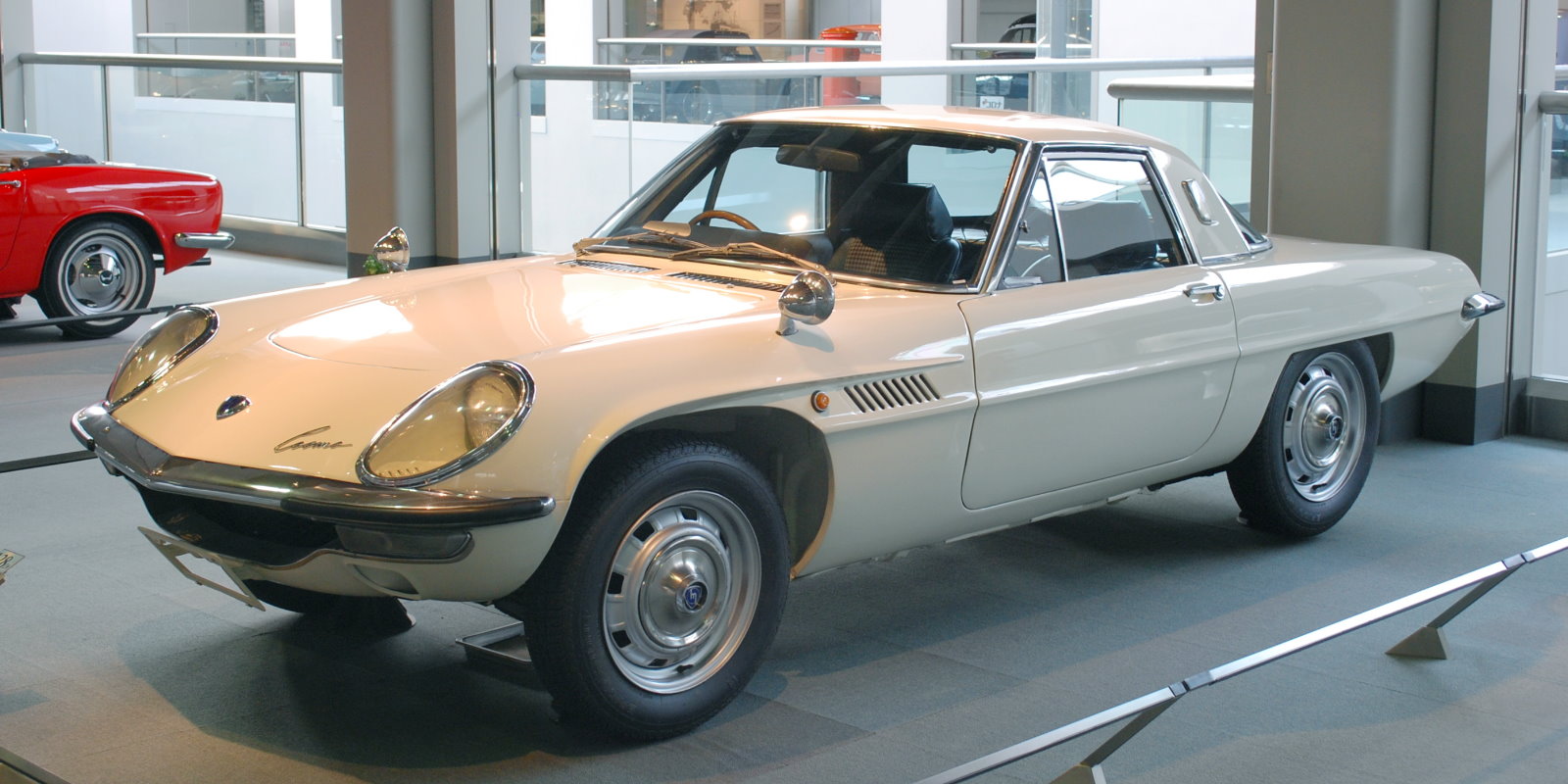 Mazda Cosmos 110S (By Mytho88 (Own work))
Mazda Cosmos 110S (By Mytho88 (Own work))
Going back to 1960, the President of the Toyo Kogyo company (later to be renamed as Mazda in 1984) made a bold trip to Germany to meet with executives from NSU Motorenwerke to negotiate the licensing rights for the German company's Wankel engine. The Mazda president was convinced that investment in this new engine would allow Mazda to better compete against their much larger Japanese rivals. After the deal was signed in 1961, Mazda received a prototype 400cc NSU rotary engine and they began development in earnest.
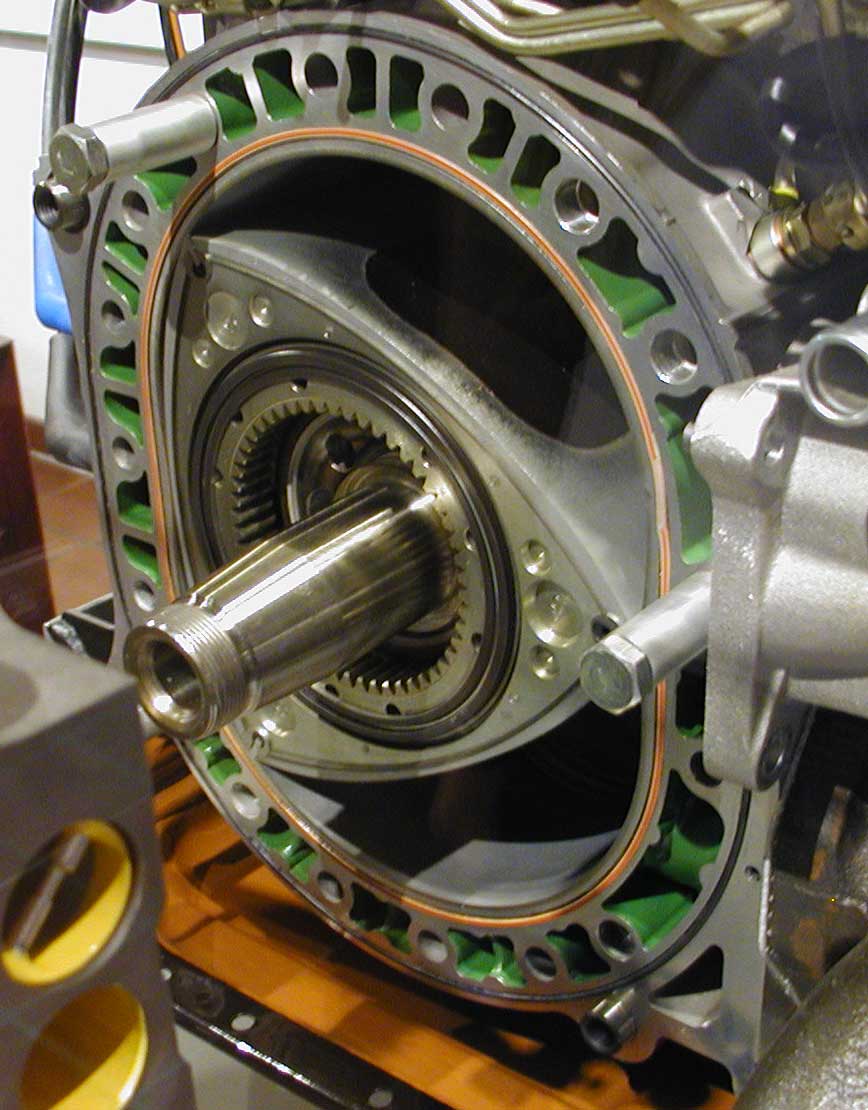 Partially disassmbled Mazda engine (By Softeis at German Wikipedia)
Partially disassmbled Mazda engine (By Softeis at German Wikipedia)
After the release of the Cosmos, Mazda became fully committed to a program to bring rotary power to their entire range of cars starting with the release of the R100 Familia in 1968. In 1971, Mazda were attaching the prefix "RX" to their rotary engined cars and they produced the RX-2, RX-3, 4 and 5.
But with the 1973 oil crisis, Mazda's ambitions for a rotary-powered future were stifled. Despite much development work, the Wankel engine's thirst for what was becoming liquid gold remained a major weakness. With the company quickly bleeding cash, Mazda put their hopes on one final car that was inspired by the Cosmos 110, their first rotary car. Their decision was to reposition the rotary engine as a purely sports car power plant and what they released in 1978 was the RX-7. This car would become part of a major invigoration of Mazda on the world motoring scene. The RX-7 ran through 3 distinct generations until production ceased in 2002 with a total of over 800,000 cars produced.
Mazda RX-7 Sydney Retro Speed Fest 2016
Mazda's next development of the rotary engine was the RENESIS 13B which was destined for the RX-8 in 2003. However, the four-door RX-8 could not match the appeal of the out-going RX-7 and it only remained in production until 2012 with 193,000 units being produced.
In 1991 Mazda pulled off a surprising and famous victory when the Mazdaspeed 787B driven by Johnny Herbert, Bertrand Gachot and Volker Weidler won the legendary Le Mans 24 hour race. The win did much to dispel concerns about the rotary engine's reliability and to this day, the Mazda 787B is the only Japanese car, as well as the only Wankel engined car to win Le Mans.